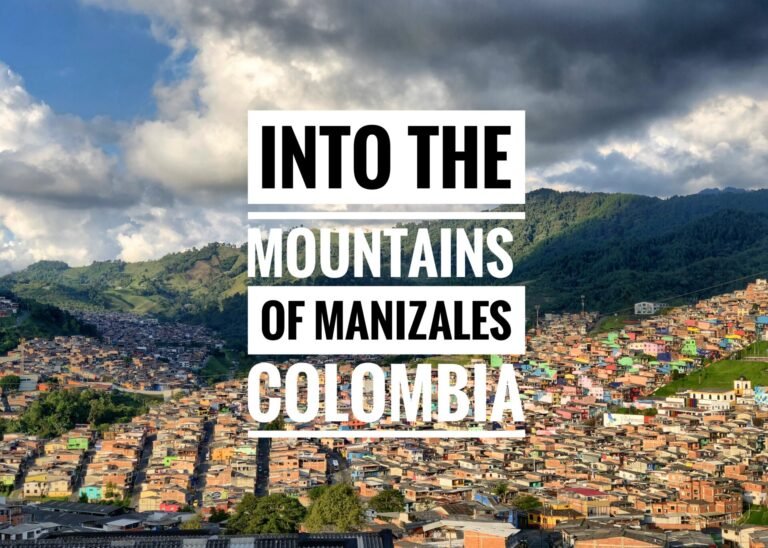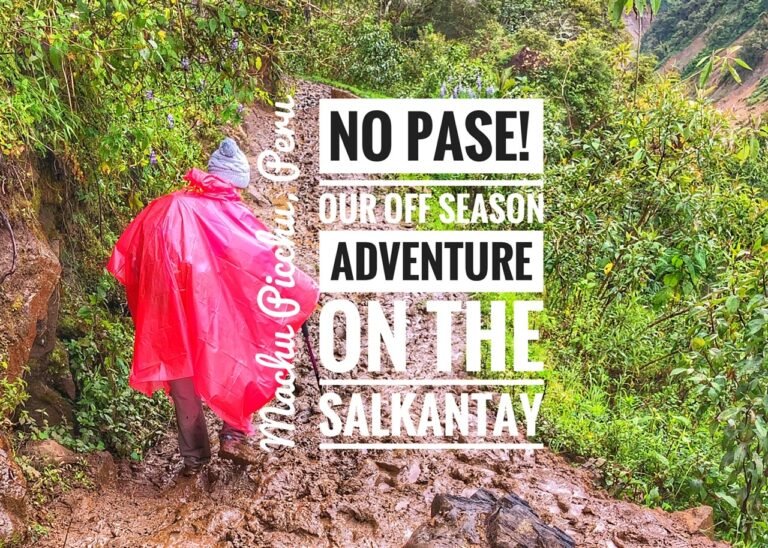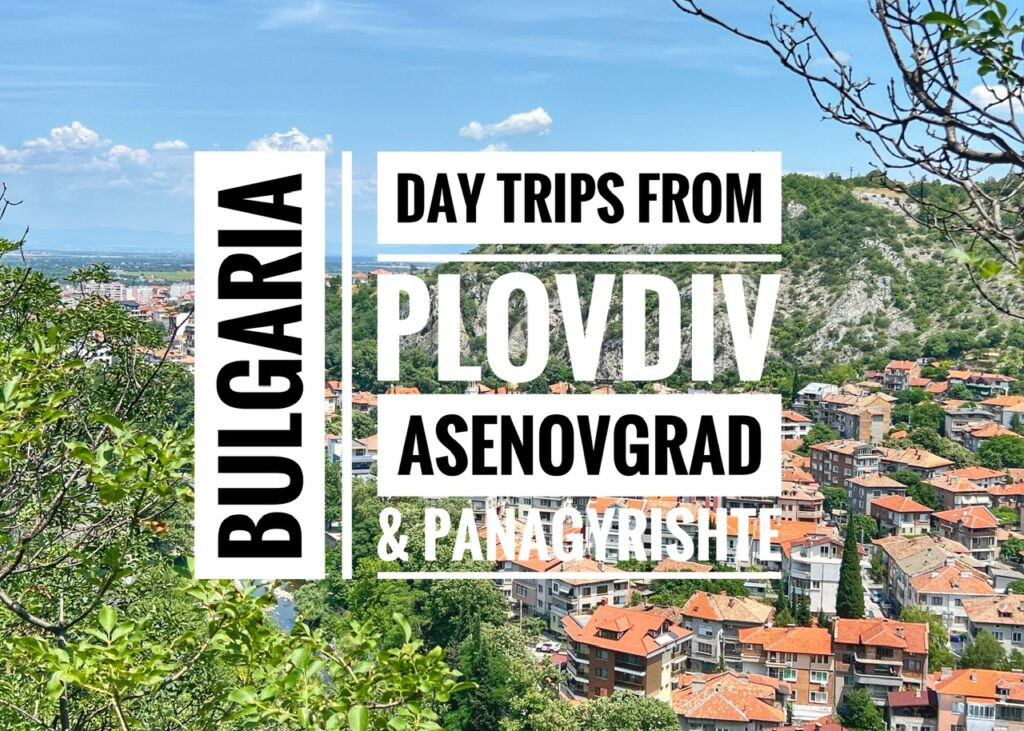
Bulgaria’s “Little Jerusalem” Gem of Asenovgrad
Only 25 minutes by train southeast of Plovdiv, settled at the foot of the Rhodope Mountains one can find a small city of 50,000 known as “Little Jerusalem,” due to its more than 100 religious sites in and around the town. What was originally a Thracian settlement, it was named after Tsar Ivan Asen II, who rebuilt the fortress soaring about the town in the 13th Century.
We took advantage of the 4.1 km moderate hike from the trains station to this partially restored fortress for one of our Sunday activities, which was delightedly followed by a craft beer at a hipster bottle shop, which we hadn’t experienced in Bulgaria until this day.
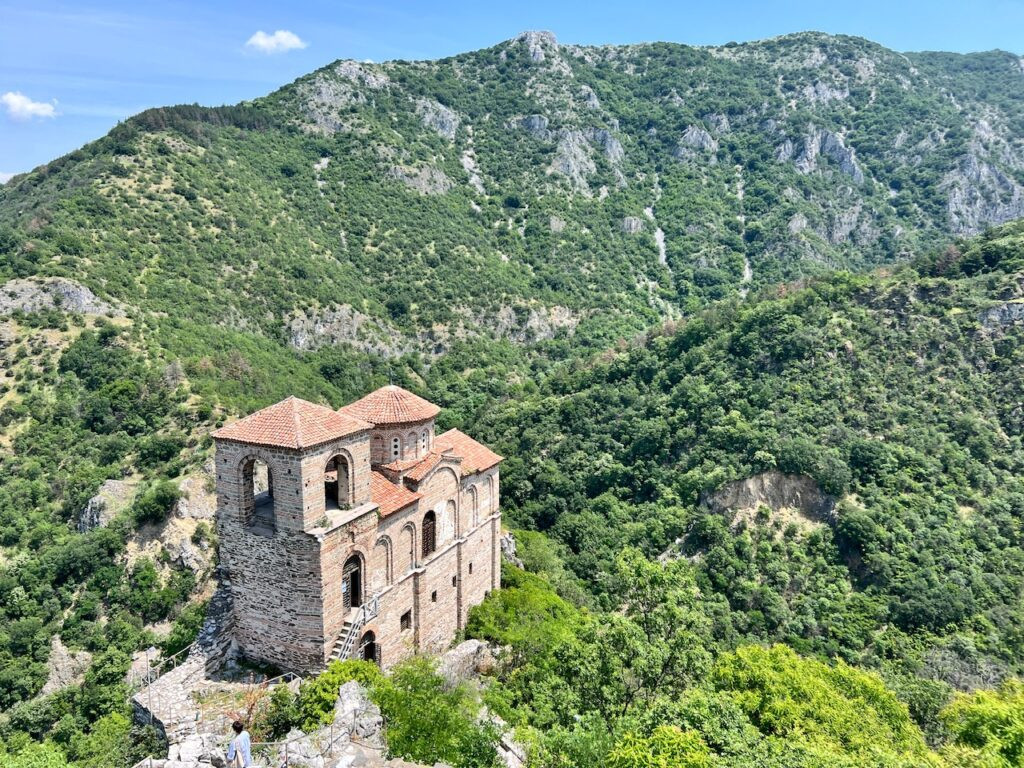
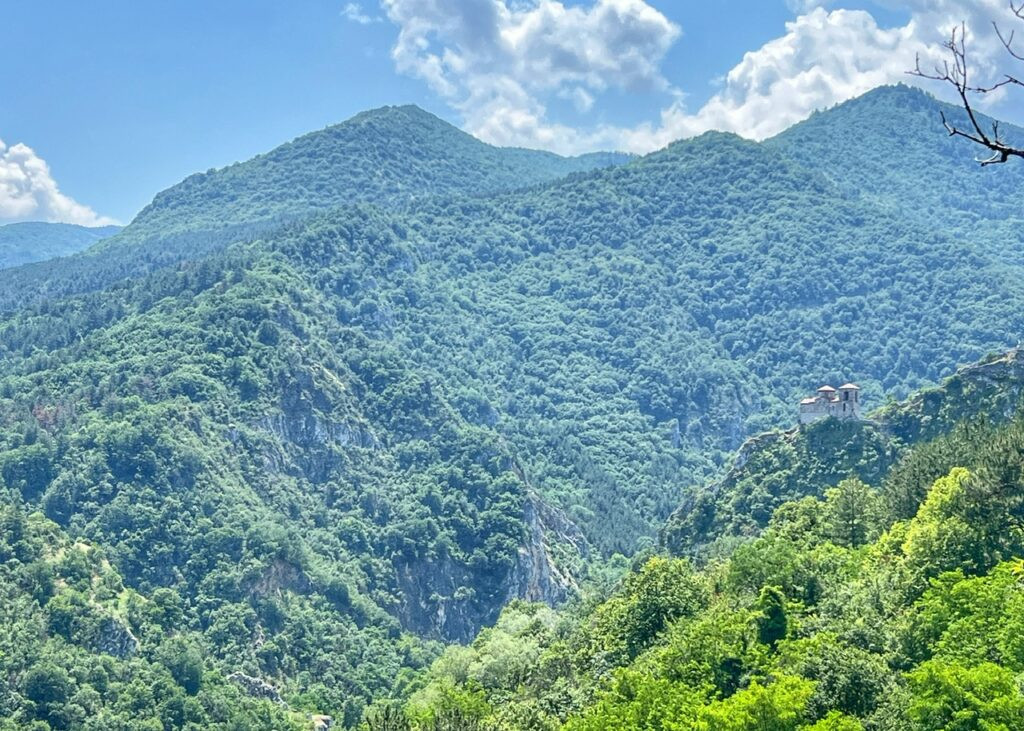
Perched on the edge of a mountaintop, the Church of St. Bogoroditsa Petrichka is the most noteworthy church in Asenovgrad and undoubtedly the most intact part of the fortress itself. In the second photo, a distant view of the iconic church, as seen from the trail, which shows the scale of the setting and majesty of the scenery.
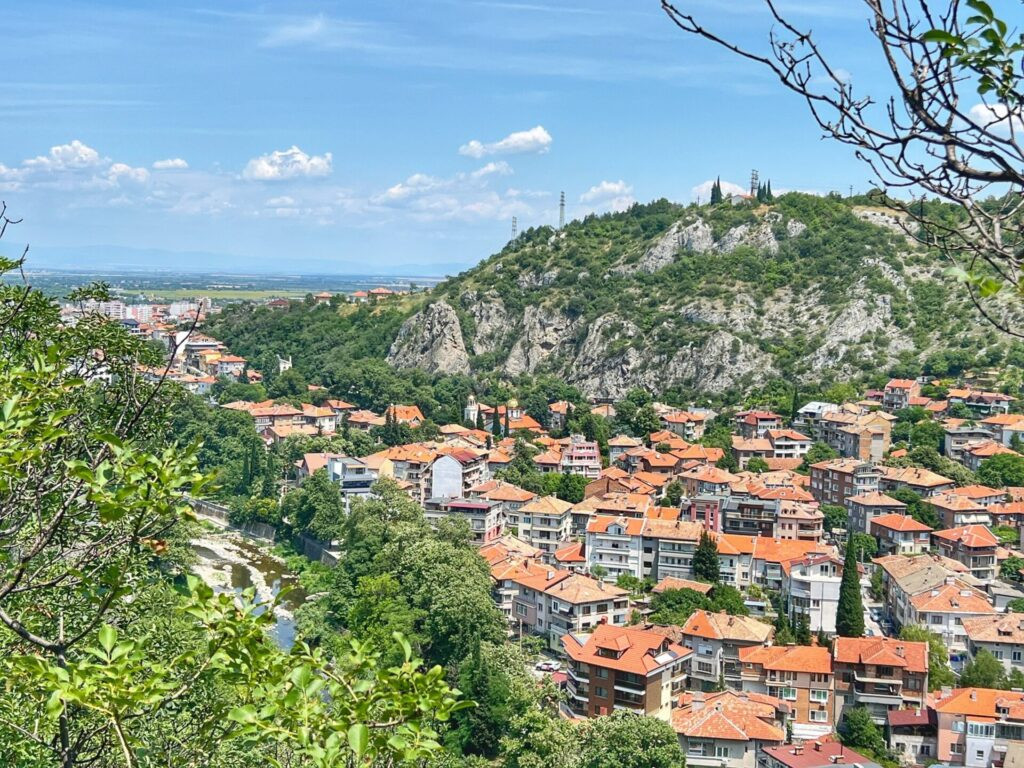
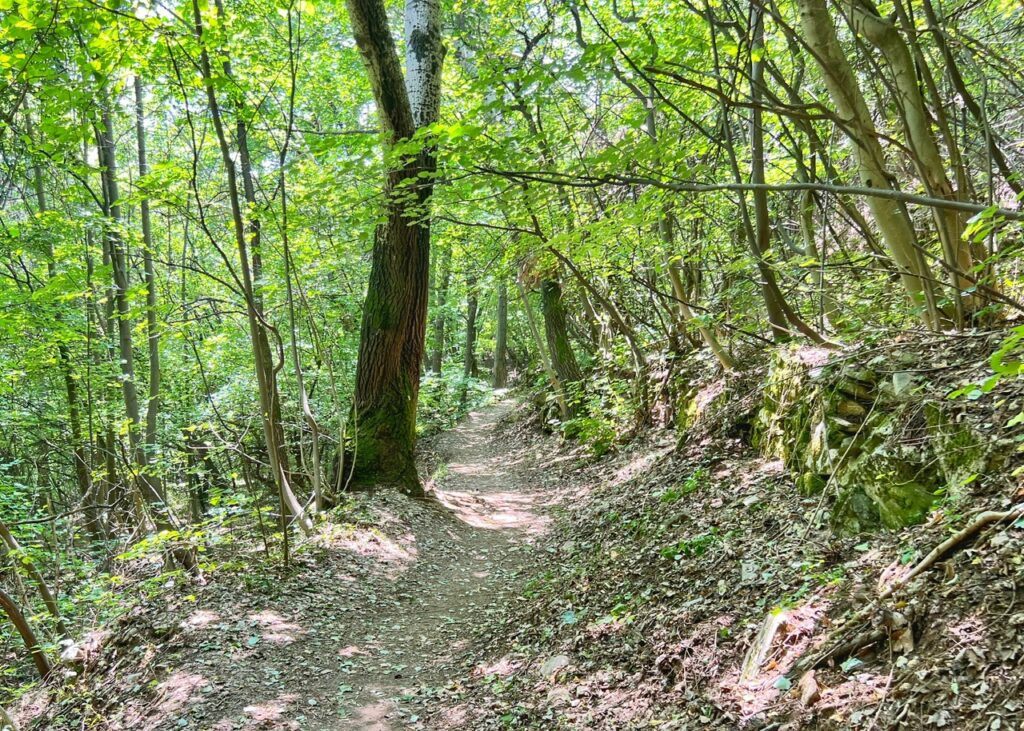
Although you can drive, the trail was very well worth it and also gifted an inviting slice of solitude. From the trail, an incredible view of the red-roofed Asenovgrad emerges. The trail itself was mostly forested, which offered a welcome escape from the summer heat.
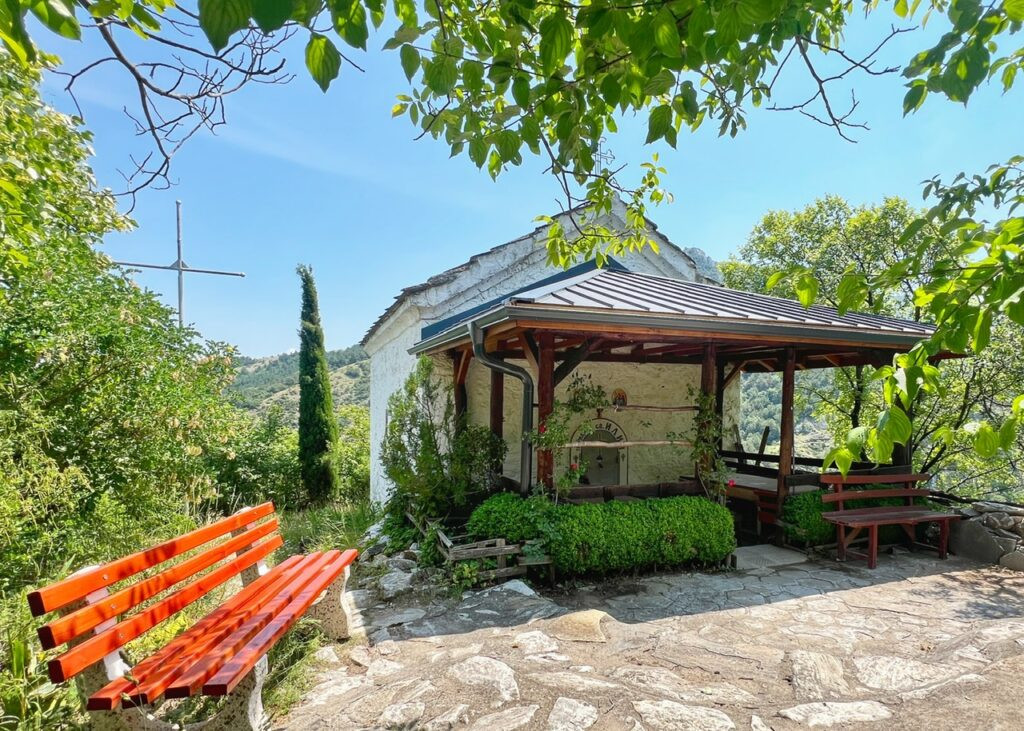
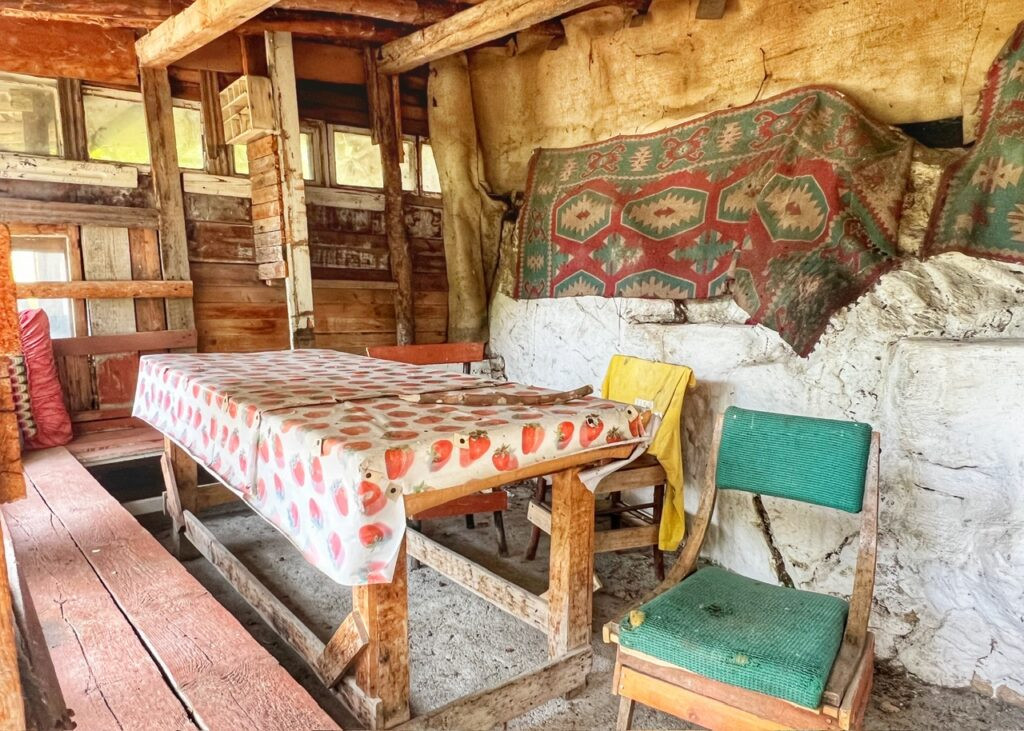
About mid-way, a surprising respite offered water, and what appeared to be a dilapidated and forgotten place for hosting gatherings.
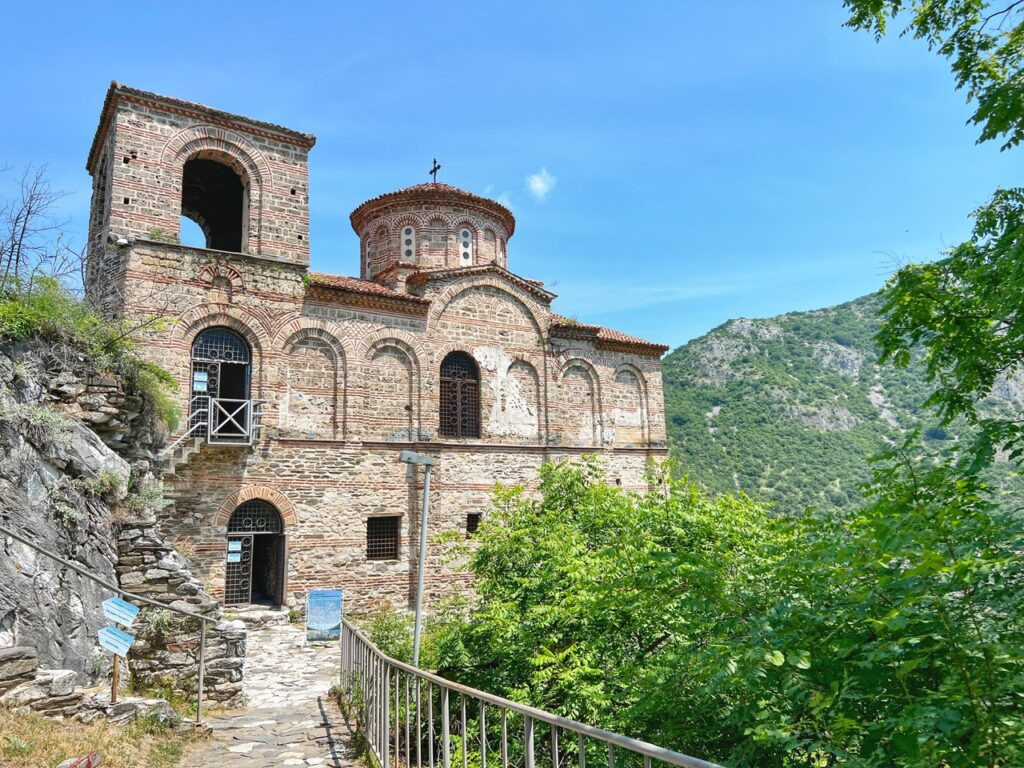
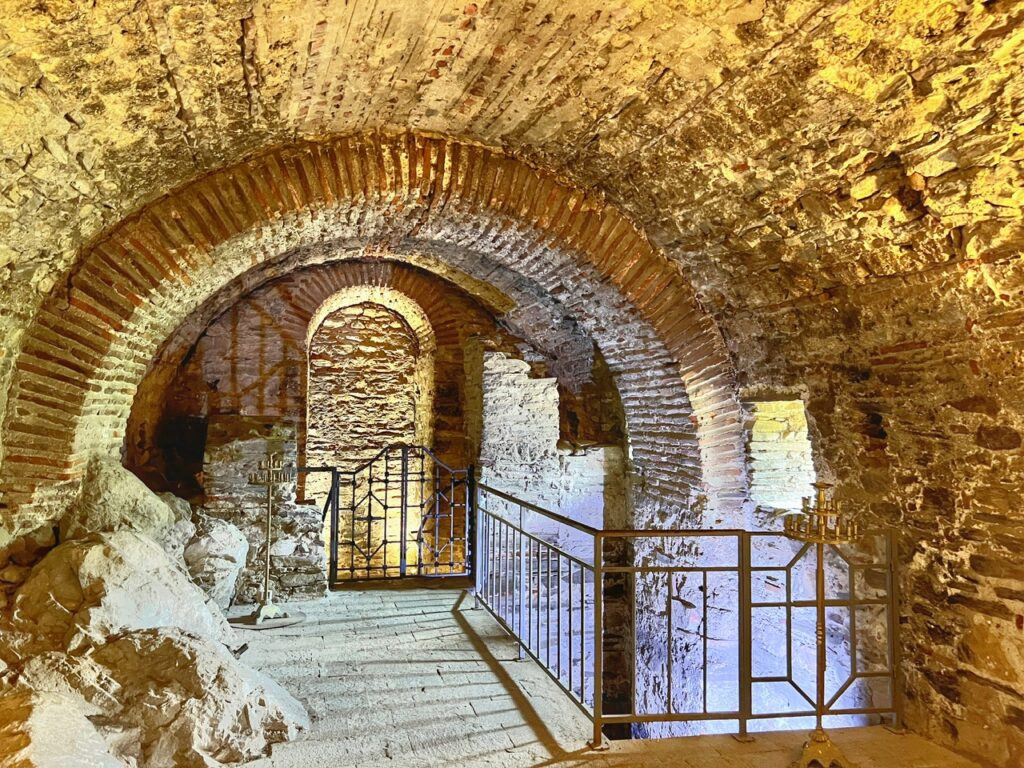
Arriving to the fortress, and church, which is one of the best-preserved monuments of church architecture in the Rhodopes. But although the single-nave, two-storied architecture is fetching, the most attractive element is its towering setting. It cost 8 Leva (or $4.72) to enter. There were several people at the top on the Sunday we went, though we hadn’t seen any on the trail. Pictured inside: the lower level of the church
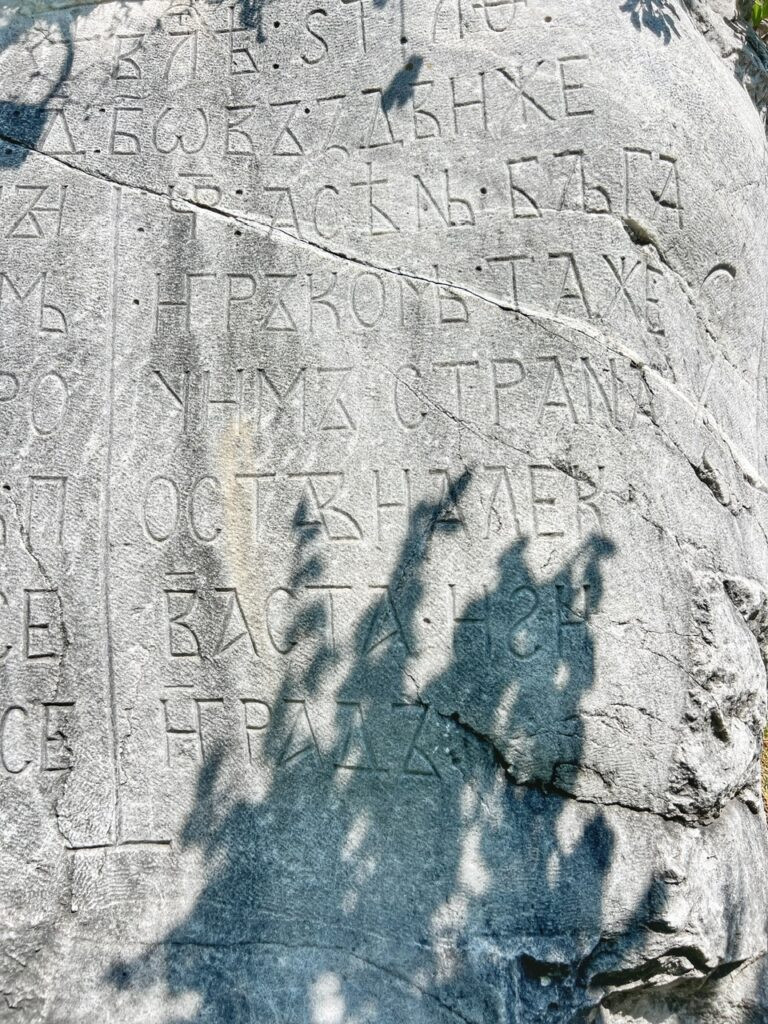
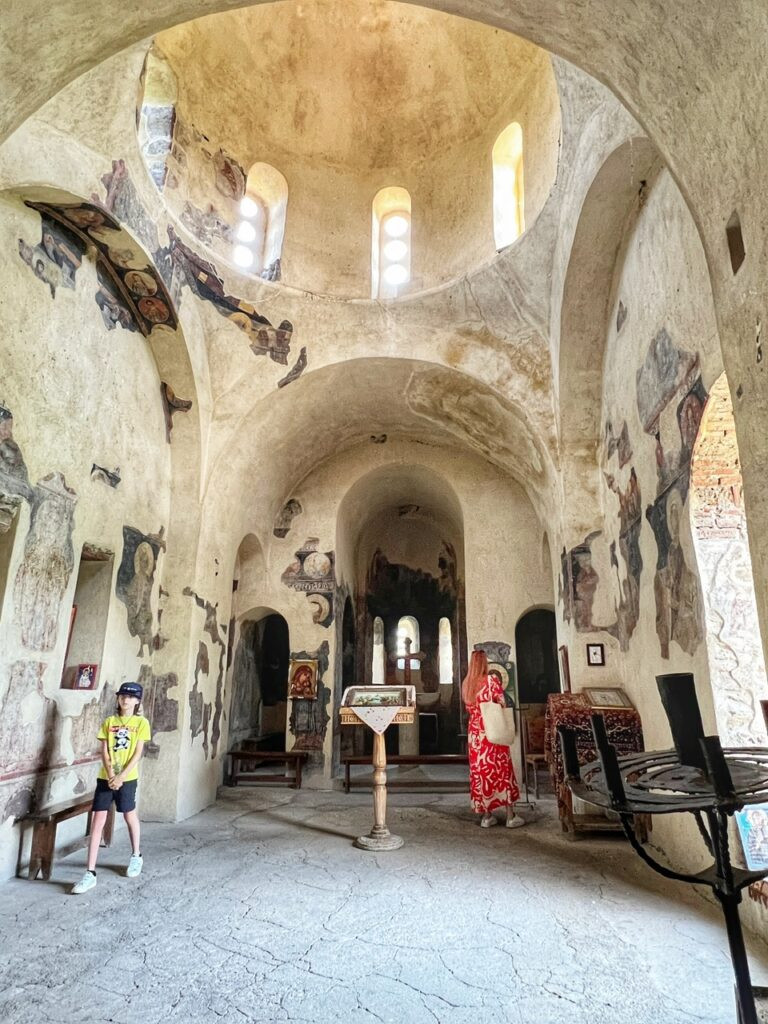
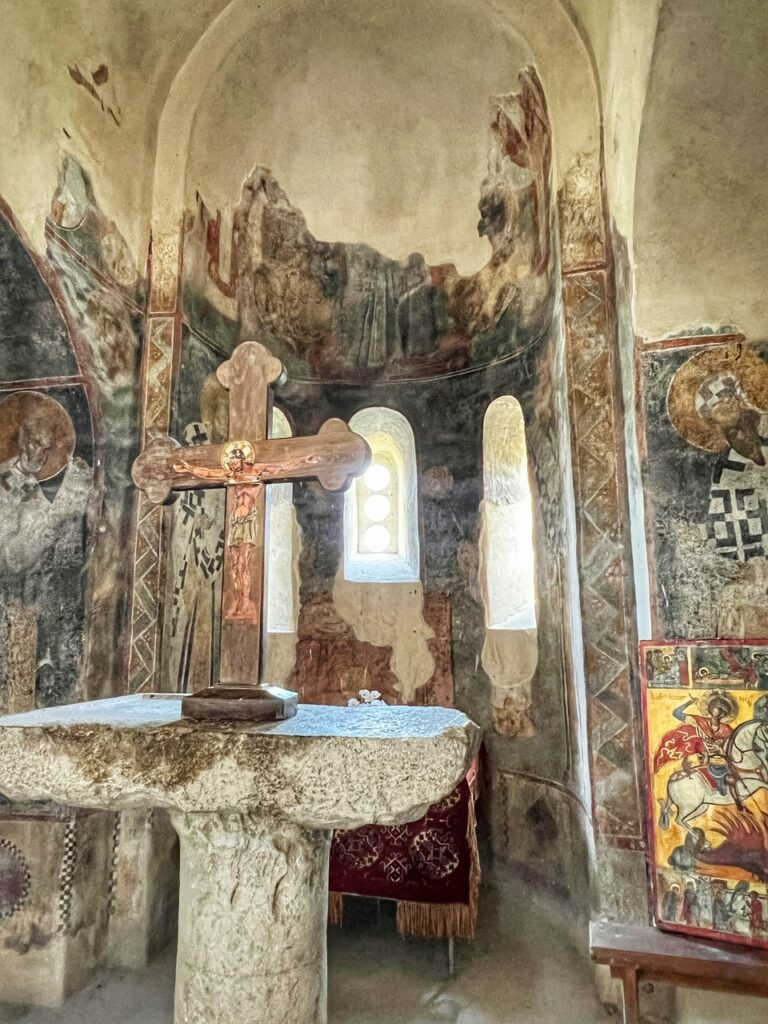
Near the church you can also find the Assen inscription of Tsar Ivan Asen Il, which is an old Bulgarian epigraphic monument carved on the southwestern marble slope of the Assen fortress.
The upper level of the church is quite stark, other than some remnants of fading frescos, which were undeniably gorgeous at one point. More of the frescos can be seen from this view. It was interesting to see it partially unclad after the impeccably restored Bachkovo Monastery.
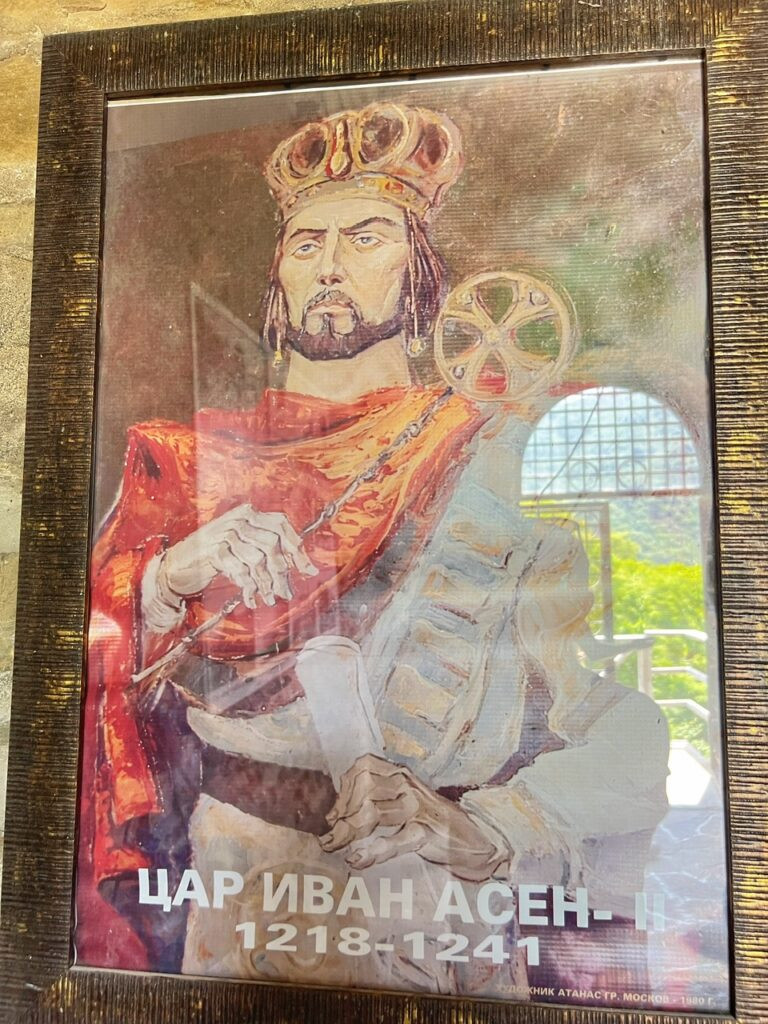
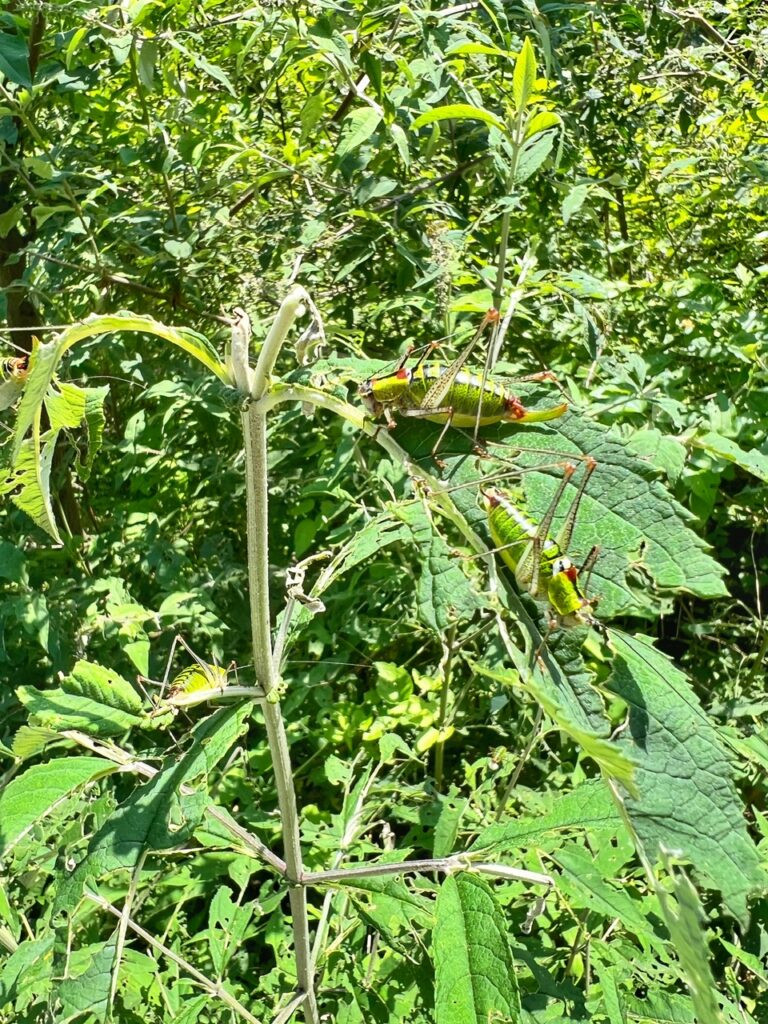
Asen reigned as tsar 23 years until his death in 1241. On the trail back down, we noticed hundreds of Bellied Bright Bush Crickets, perfectly camouflaged on the leaves.
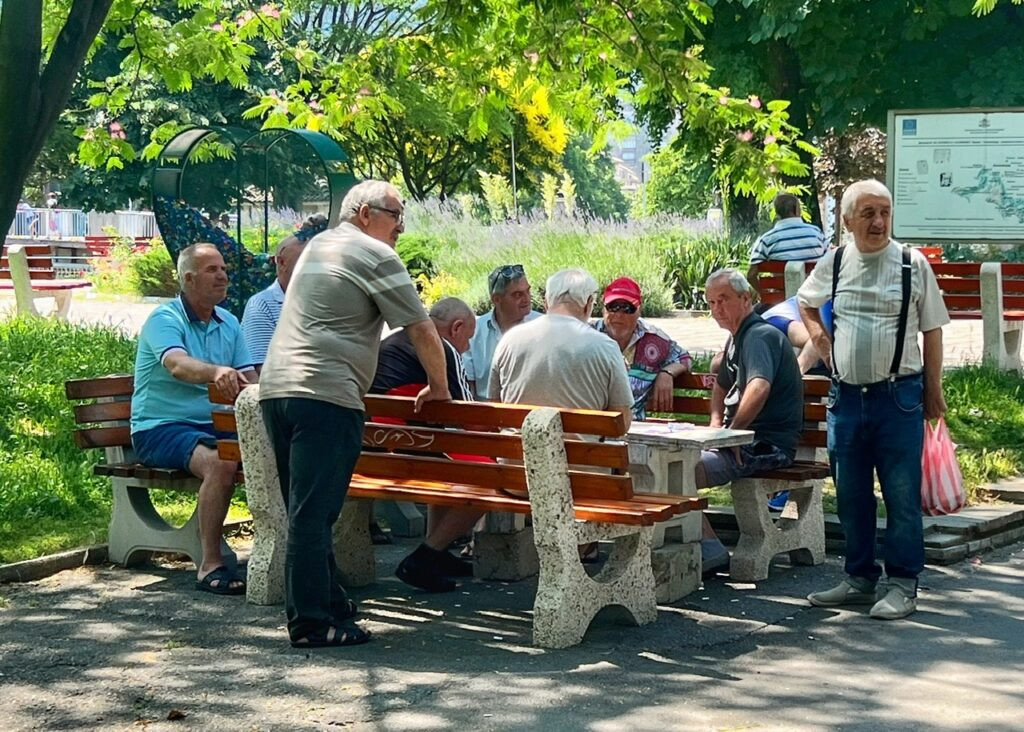
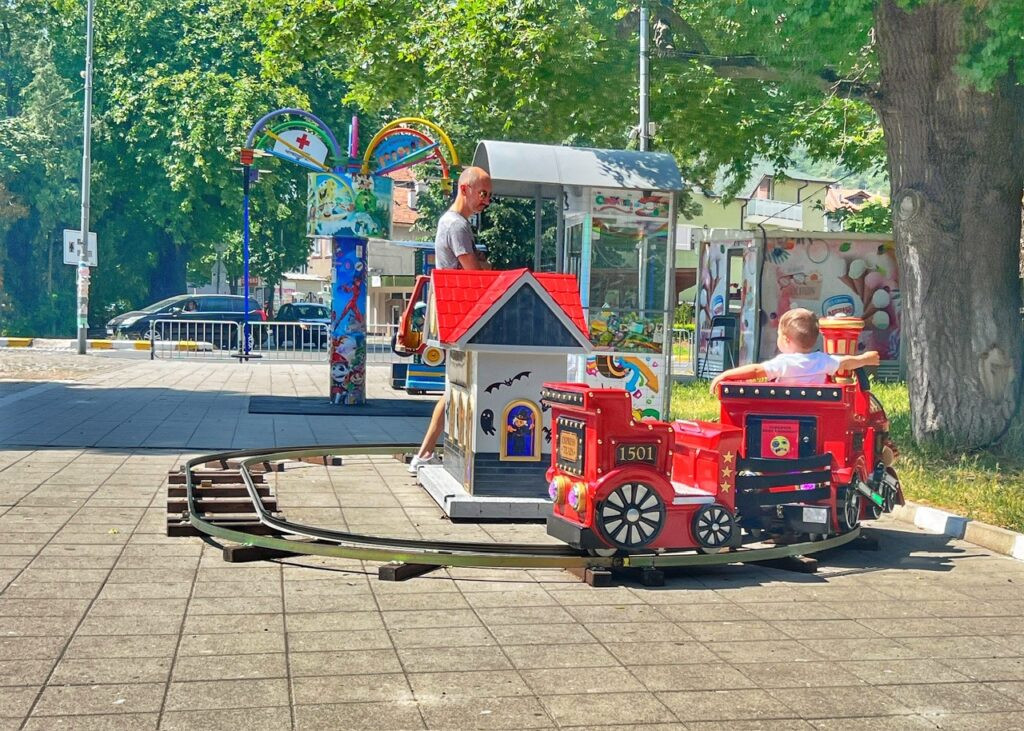
Back in Asenovgrad, it seemed to be any other day with a cluster of men playing cards in the park. Also, a riveting looking train ride. (Unfortunately, we couldn’t take this one back to Plovdiv)…
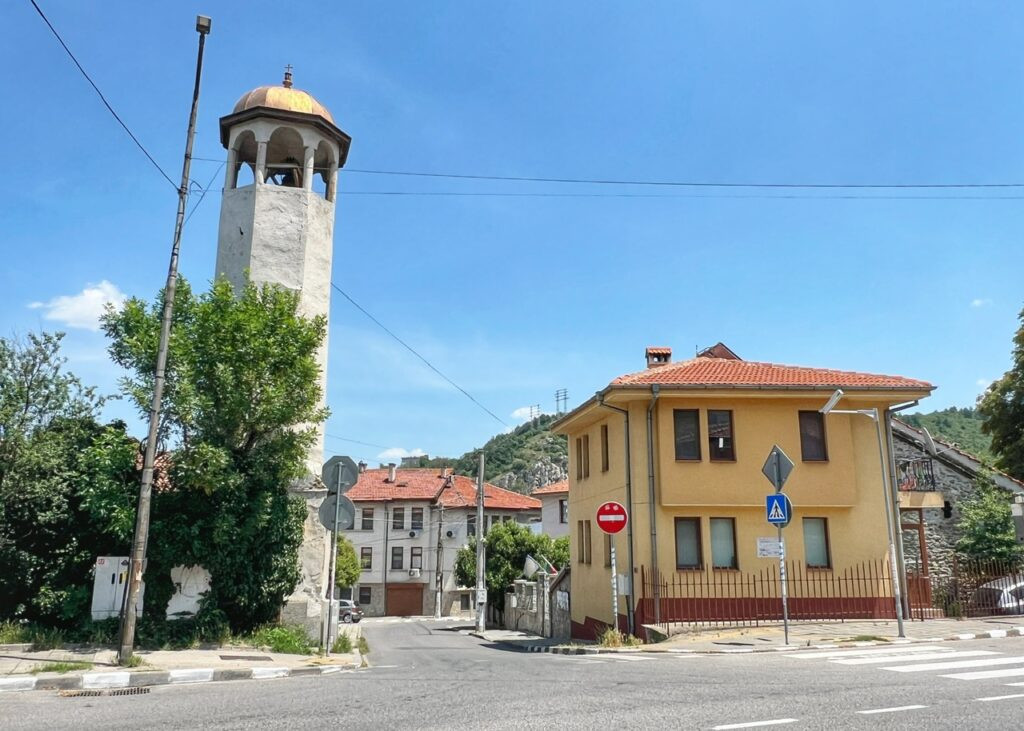
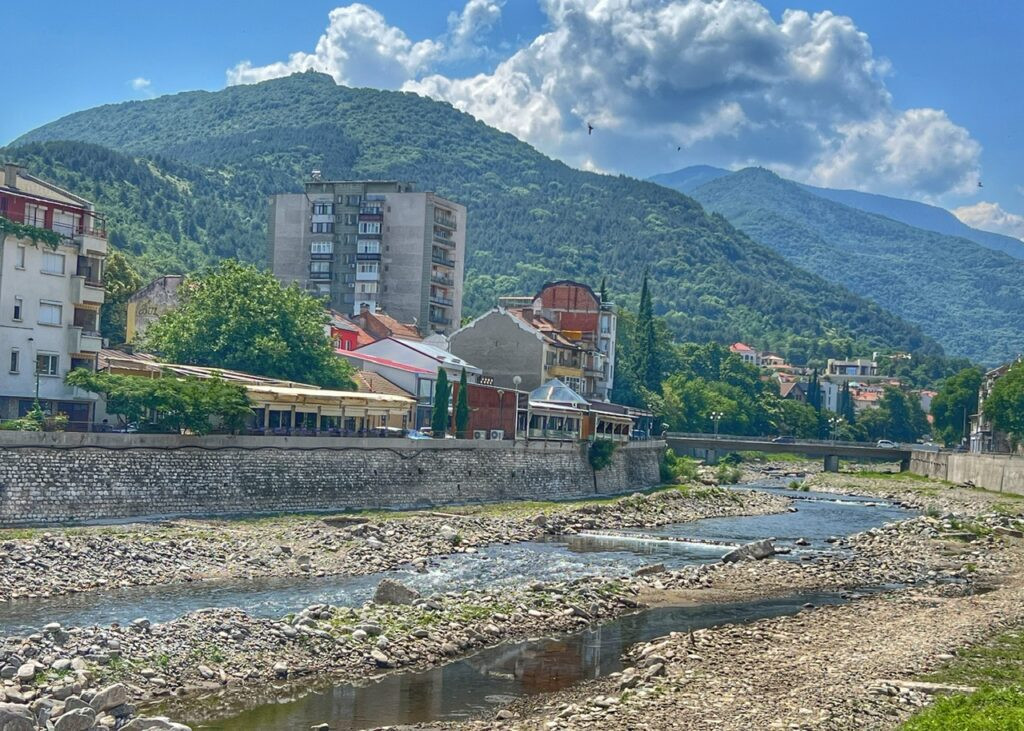
…more churches sprinkled in every direction and a massive river bed ringed by mountains…
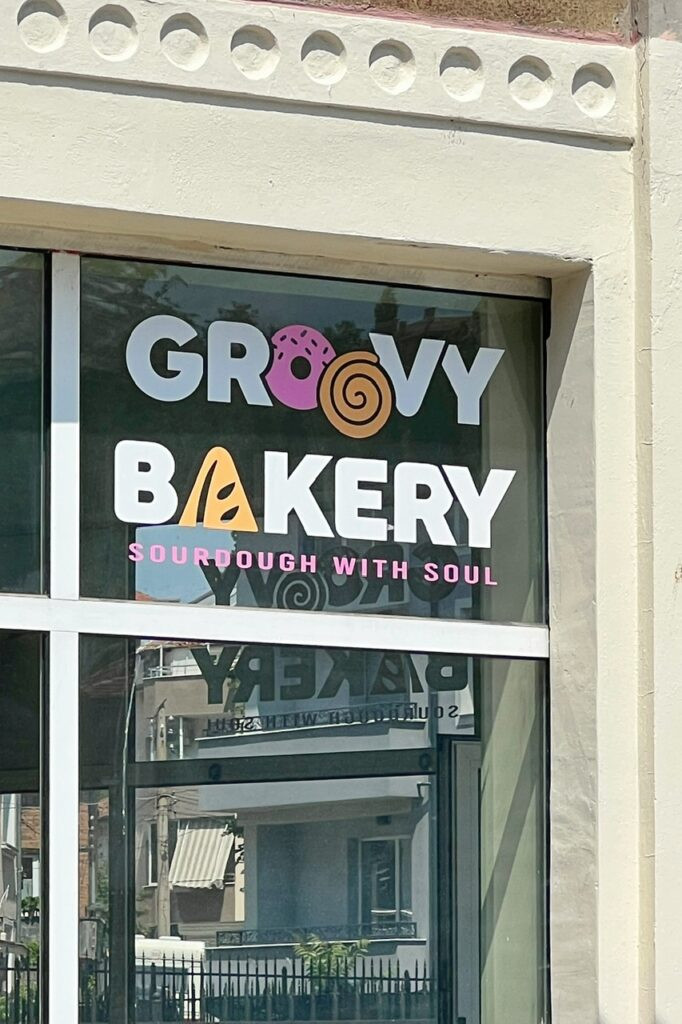
…. a sign that definitely spoke our love language…
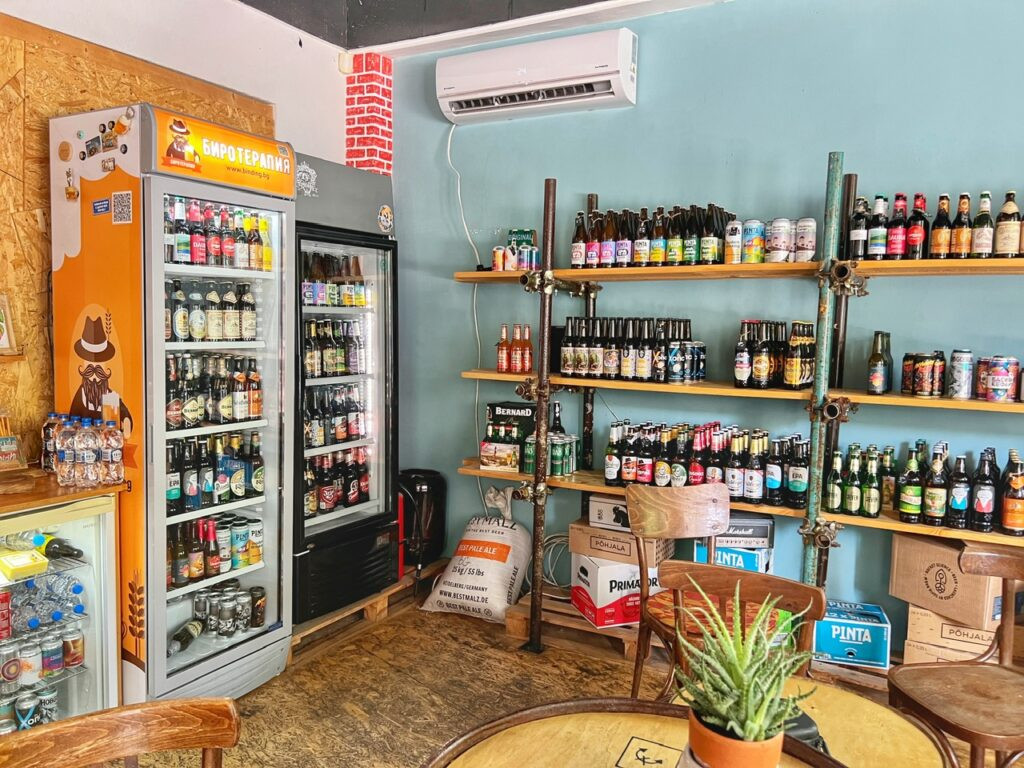
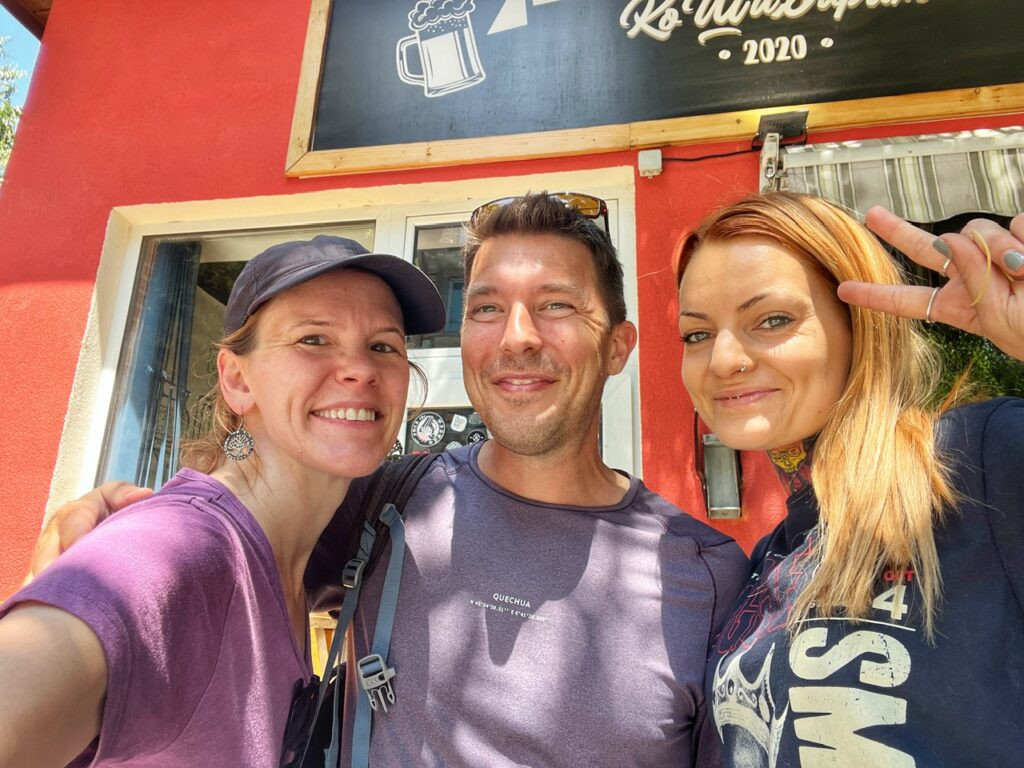
….and a gift from the Thracian gods…a bottle shop, conveniently called “THE BEER SHOP” filled with fermented love, and an idyllic endcap to a sweaty hike. While enjoying our brews, which were less than $6 for two craft ales, we chatted with Dani, the friendly server, for awhile.
She had quite the set of tattoos which Mandy lamely told her was “mnogo yako” or very cool, before she revealed she was yet another Bulgarian young pup that also spoke perfect English, despite the needles that must have penetrated her neck for this one.
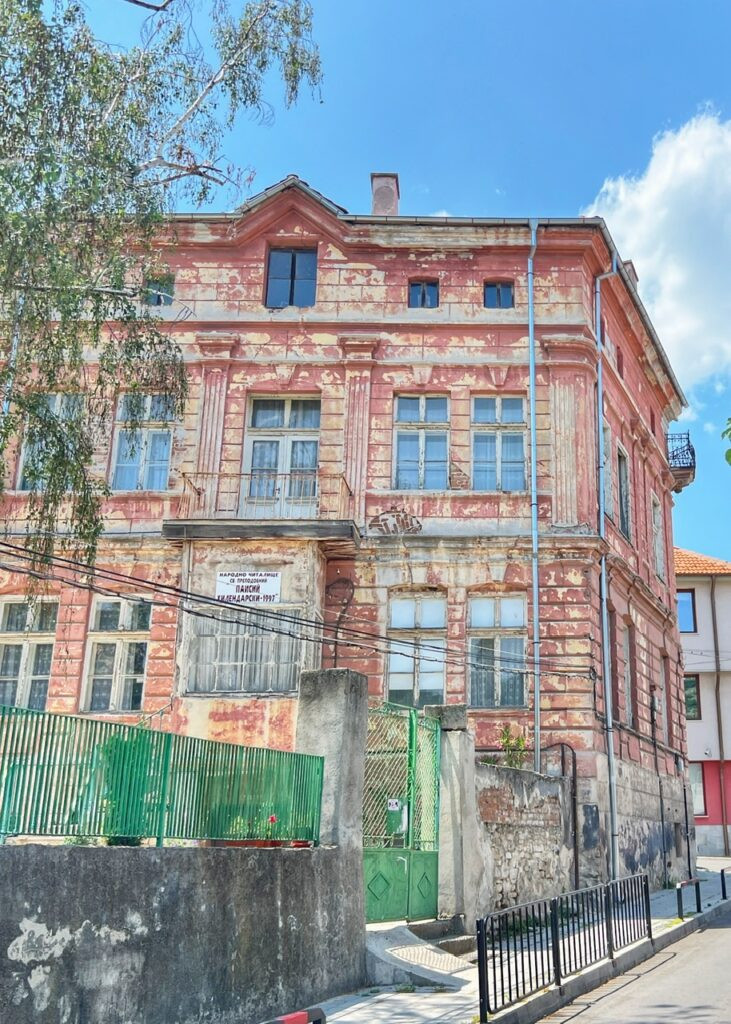
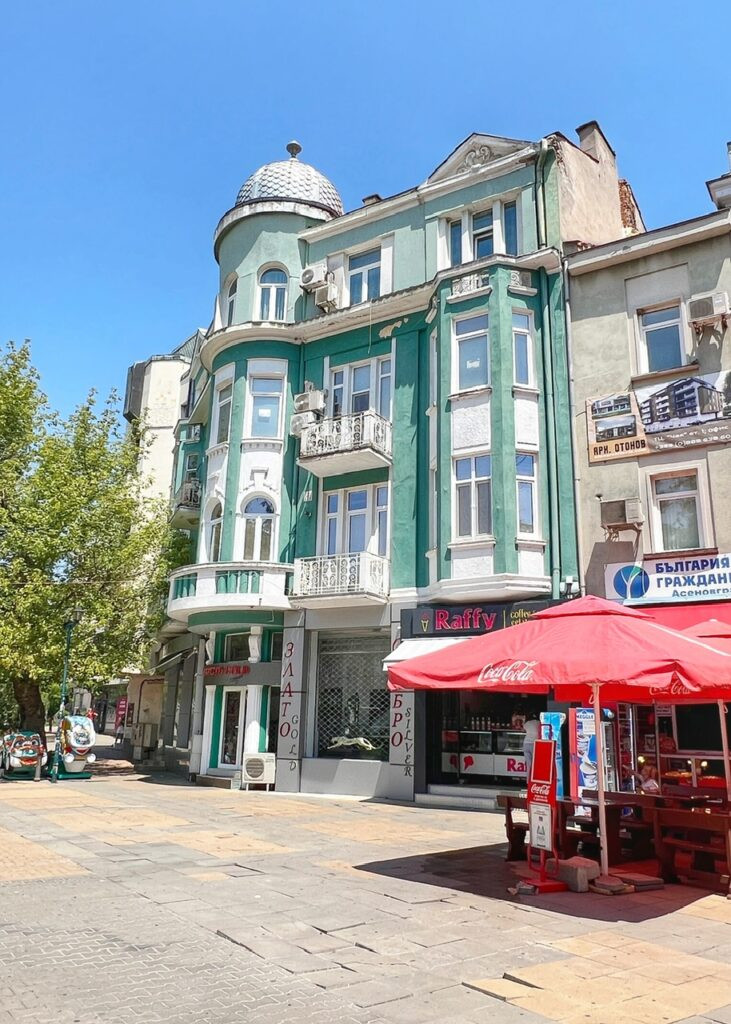
As in most of Bulgaria, there is a lot of potential for fixer uppers in Asenovgrad. It’s certainly a nice distance from Plovdiv…
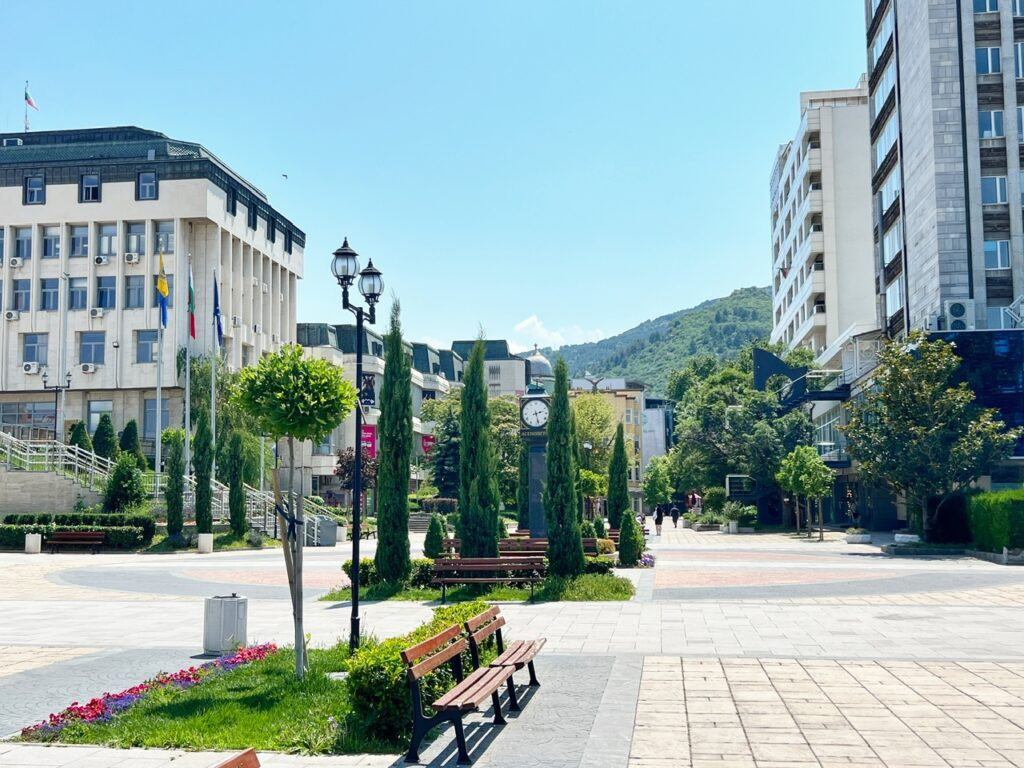
The main pedestrian thoroughfare, which was unsurprisingly barren during the mid-day heat.
Discovering Unknown History in Panagyurishte
From Plovdiv, we traveled two hours northwest by train to the town of Panagyurishte, which has been inhabited since 6th Century BC and is an important historic site in the region’s history for two notable reasons….its wealthy status during Thracian times which was confirmed during a 1949 pirate booty worthy gold treasure discovery, and also as the site for the April Uprising against Ottoman rule in 1876.
It has some quite unique finds and is well worth a day trip from Plovdiv or Sofia. Not to mention…there were no other tourists in sight!

The Panagyurishte Gold Treasure is a must-stop while in the town.
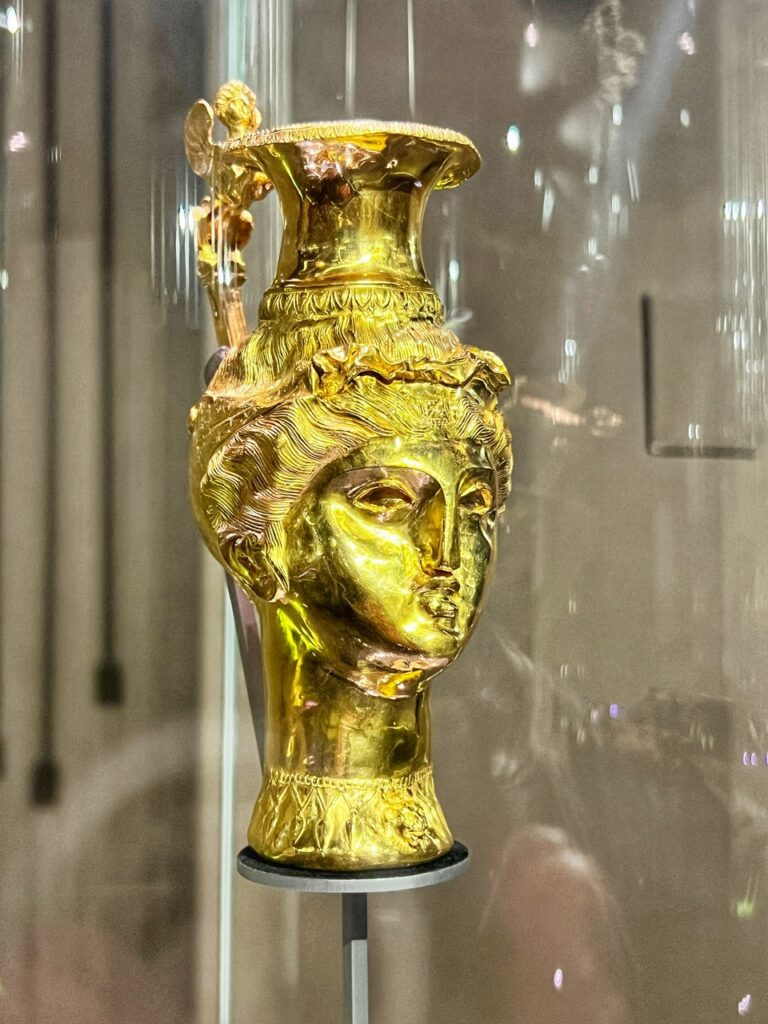
The story is that one day in 1949, three brothers Pavel, Mihail and Petko Deykov were digging for clay, most likely for roofing tiles. Clearly these boys had an effective mother because when they accidentally stumbled upon nine pure gold vessels with a total weight of 6 kg, they turned around and gave them to the state instead of cashing in. Geez. Hope they earned a finder’s fee! Anyhow, the treasure is dated from the 4th-3rd centuries BC, and is connected with the royal rituals of the ancient Thracians.
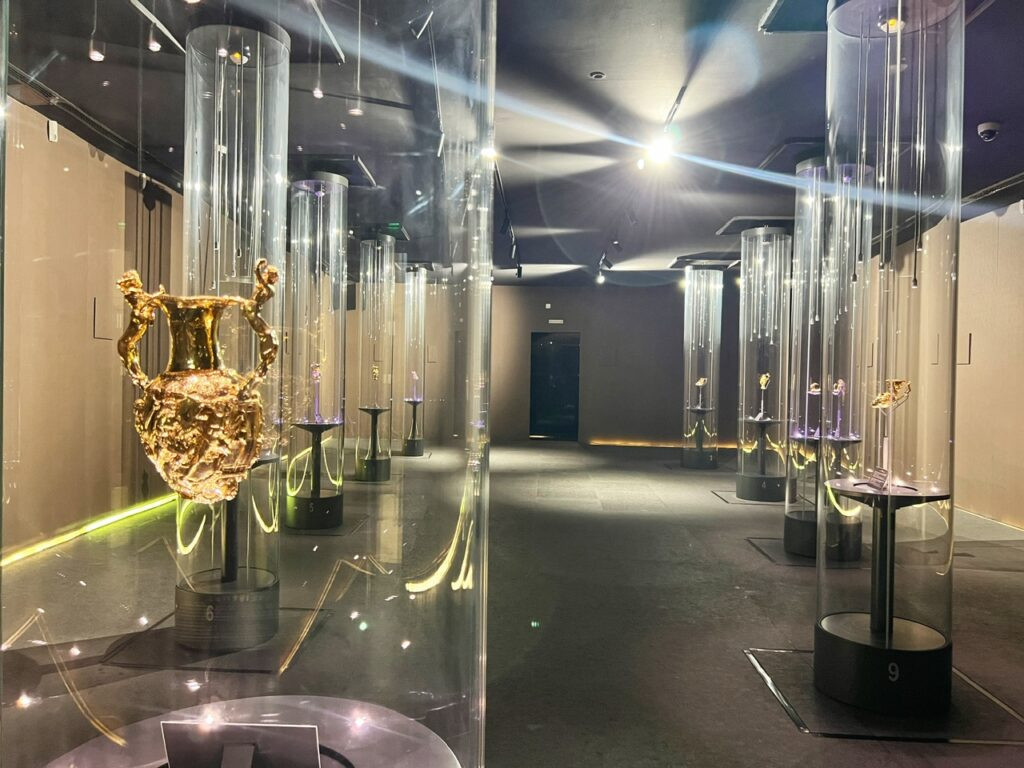
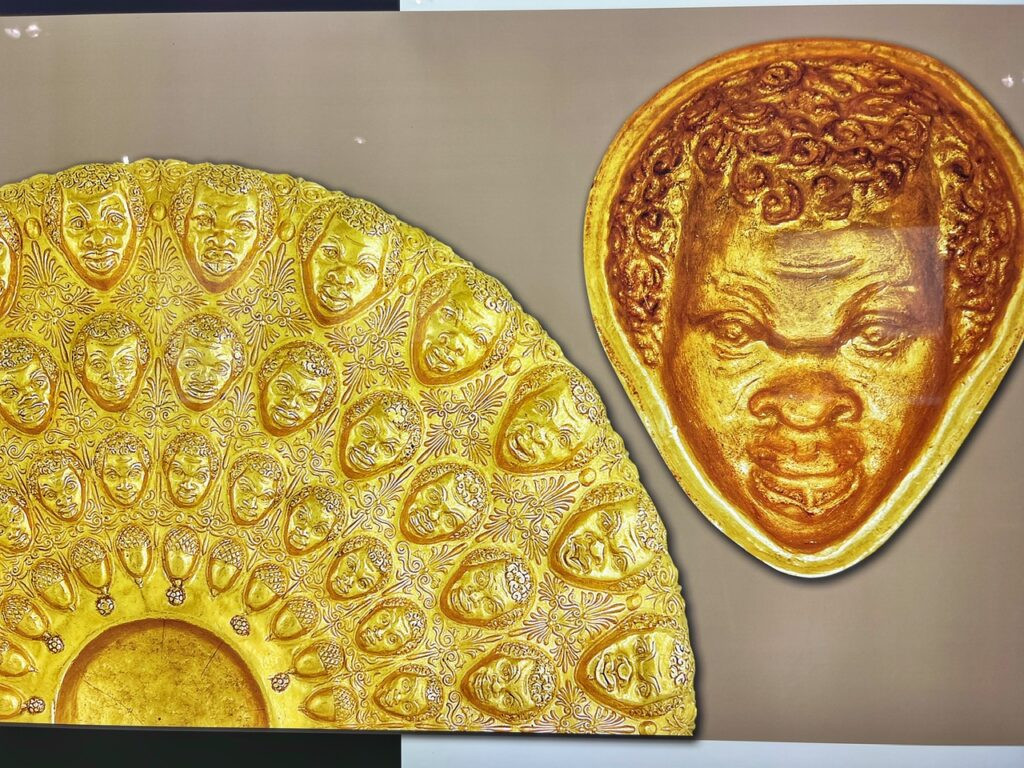
The vessels, notable symbols of power, are considered one of the most significant Thracian treasures ever found. The shape and size of the vessel determine its purpose for libation and who got to drink from them. There are reliefs where the King of Assyria is drinking from such a phiale.
This one is extraordinary in that it has proportionally growing human heads. What’s more extraordinary is that the heads represent Ethiopians who, according to the ancient Greeks, had inhabited the south end of the world, surrounded by Ocean. They had been the first to honor the gods with libations.
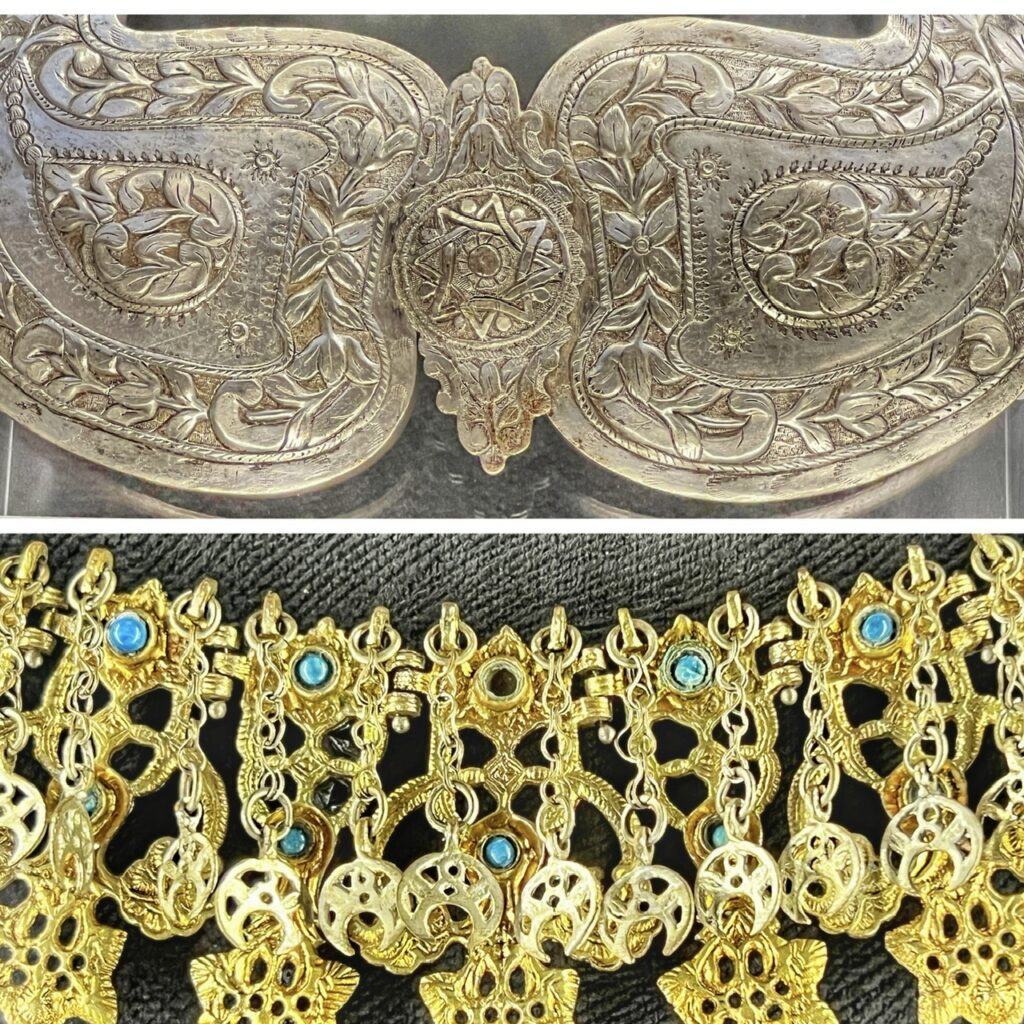
Also in this museum were a couple rooms dedicated to the fascinatingly intricate jewelry of early Ottoman times.
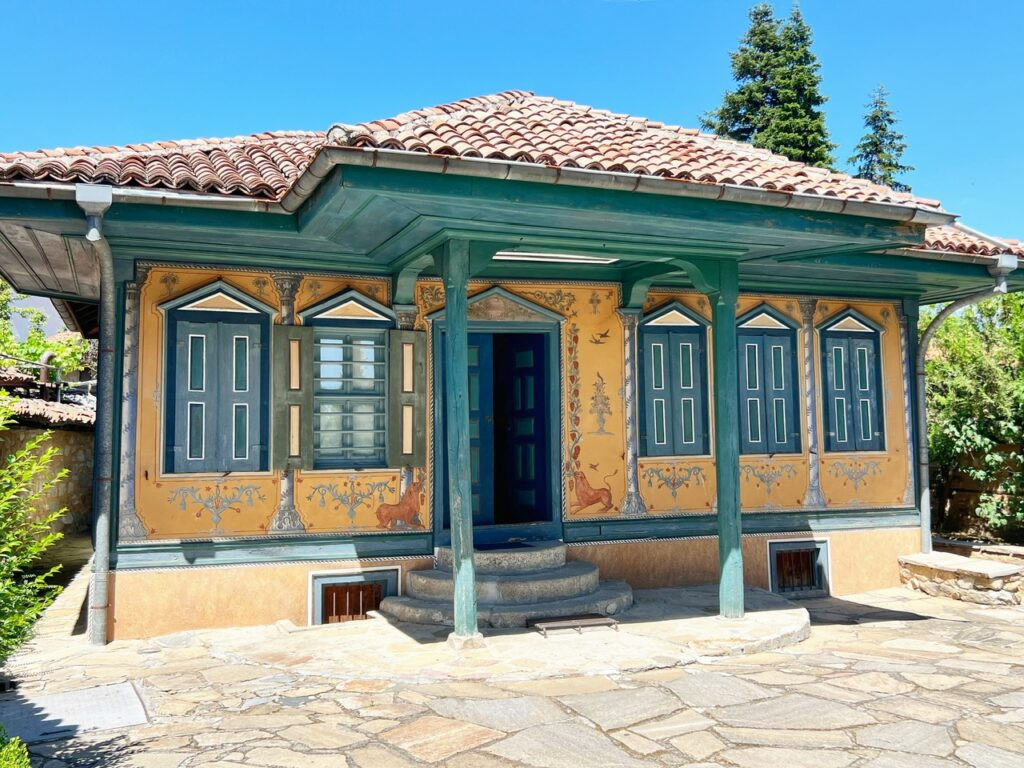
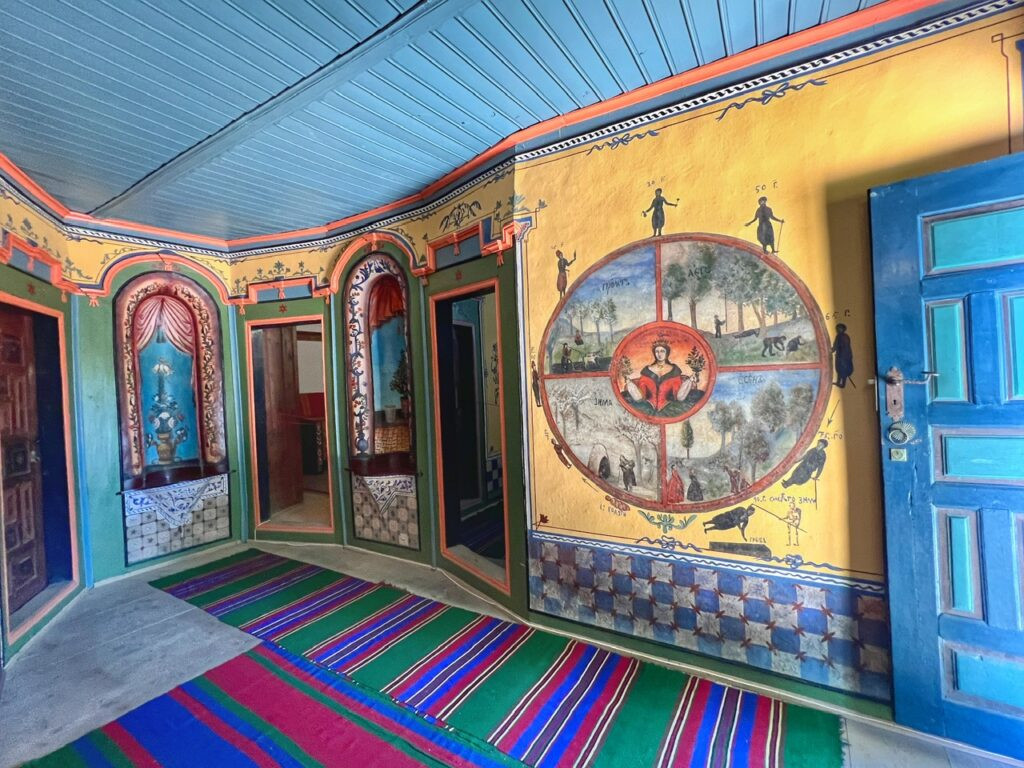
Moving on, our $7 ticket also included a ticket to the Lekova House which was draped with more art than we’ve ever seen on a house…and a bit like wandering inside a kaleidoscope.
This absolute masterpiece was painted by Ivan Zografov after the Crimean War around 1873 for the wealthy merchant and participant in the April Uprising, Ivan Lekov who clearly needed to charge his creativity to cure his probable PTSD after all the killing.
Especially exceptional was the front entryway, which features the “Wheel of Life,” a philosophical composition illustrating the cycle of human existence (life, death, rebirth) in conjunction with the four seasons.
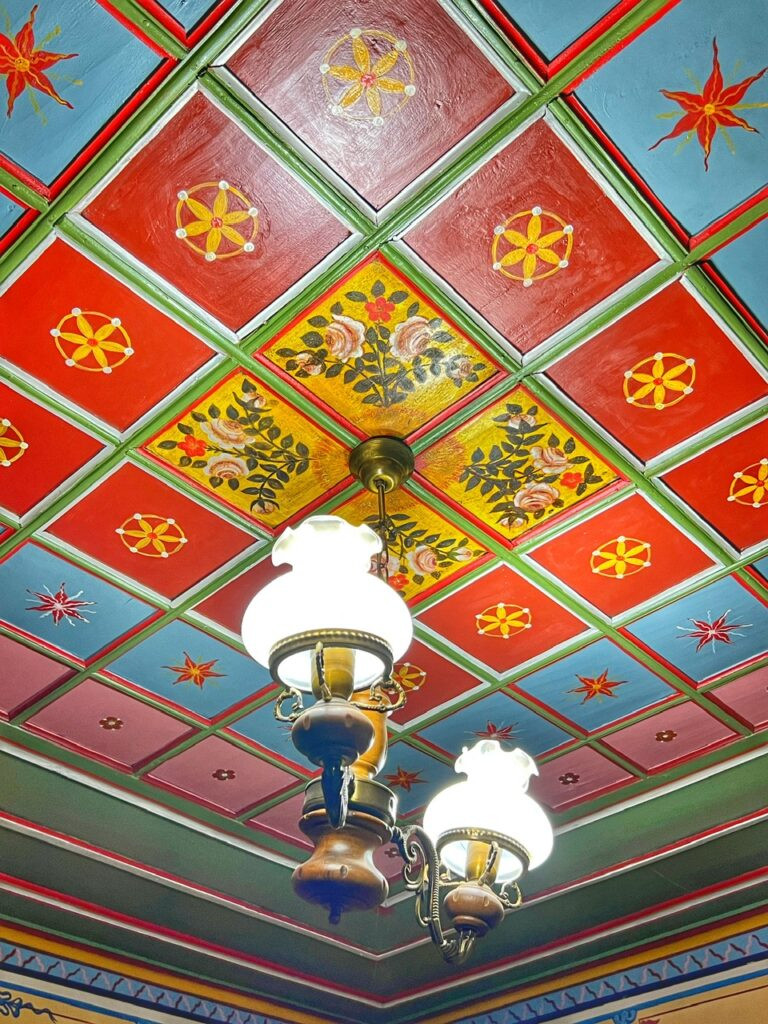
Every surface, inside and out, is covered with bursts of color, or something engrossing to look at.
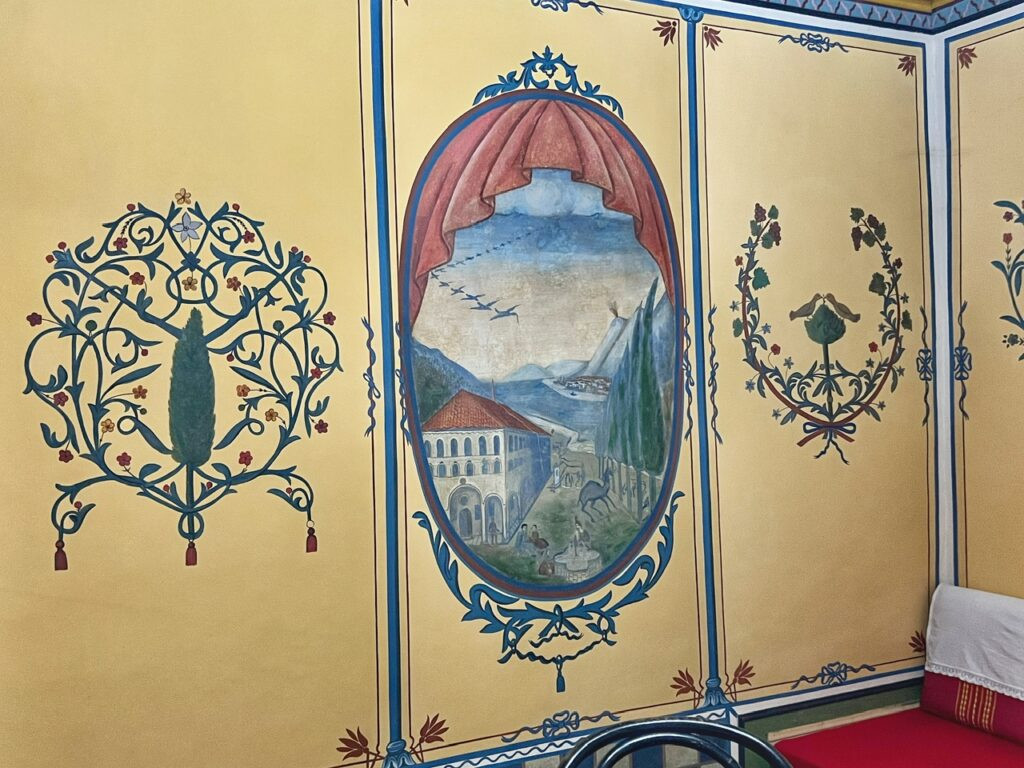
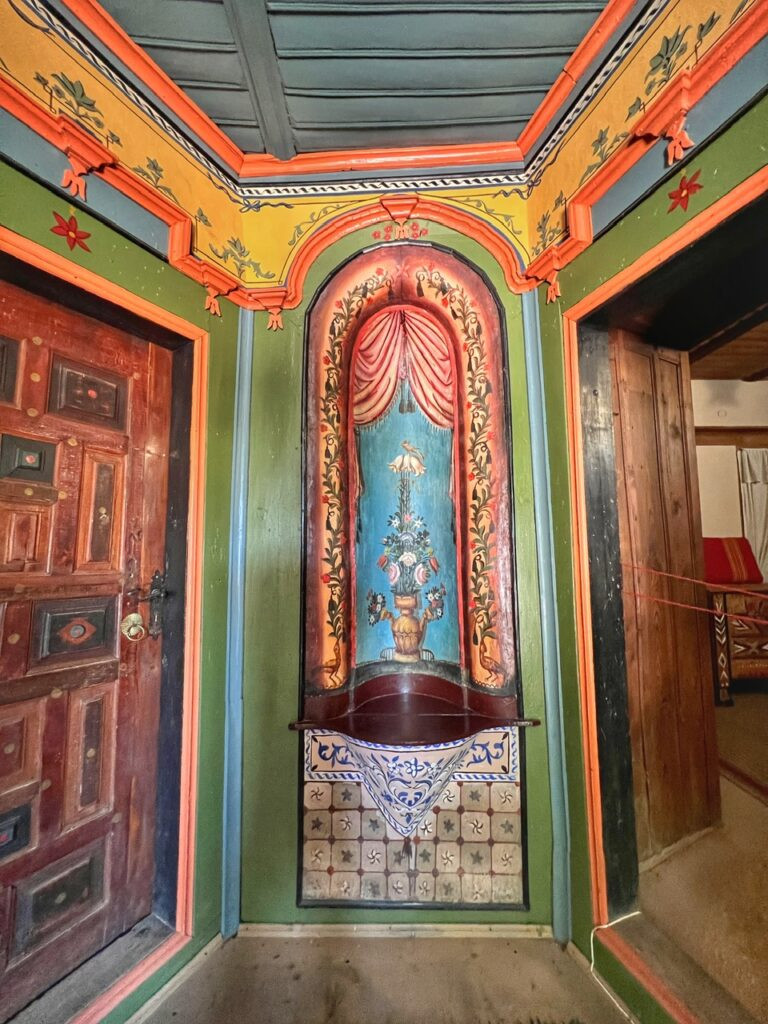
Other rooms feature other striking imagery, with some considerable artistic allure.
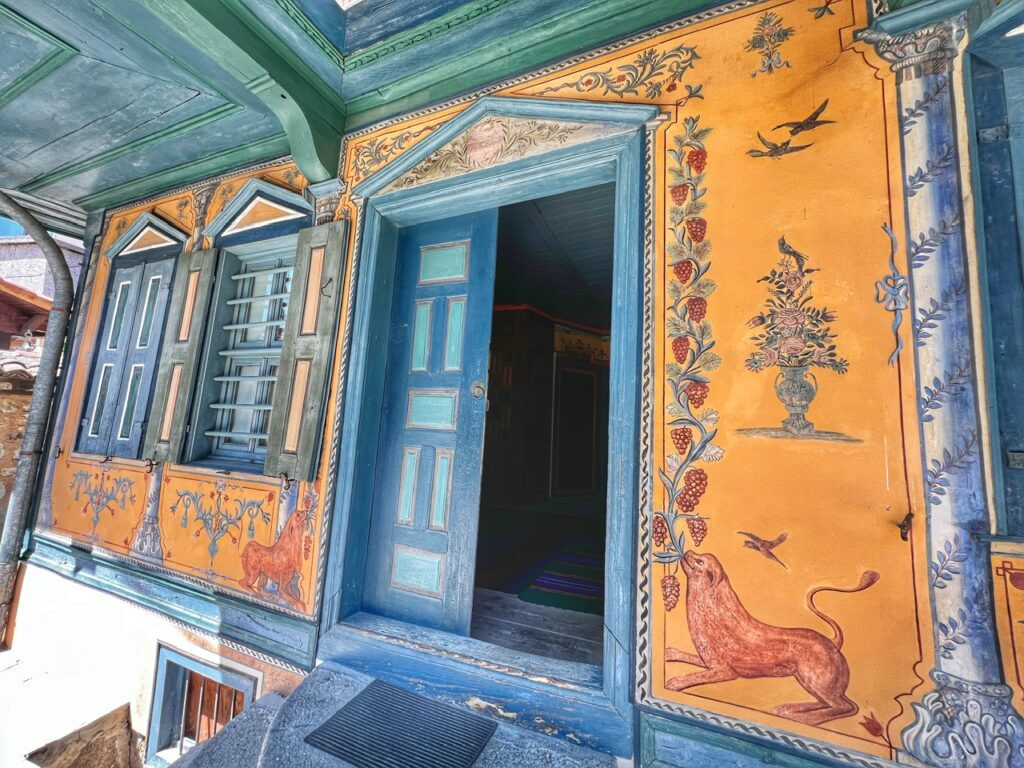
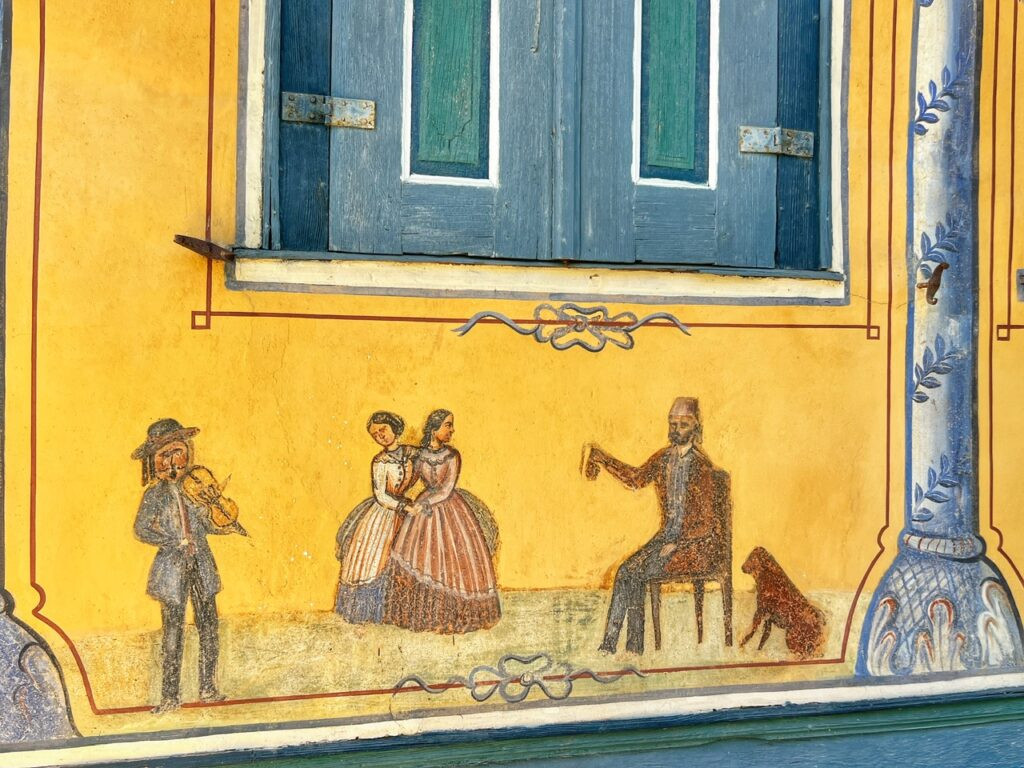
Can you imagine living in a place like this?! Such bizarre imagery…including a guy who is definitely not getting any tonight.
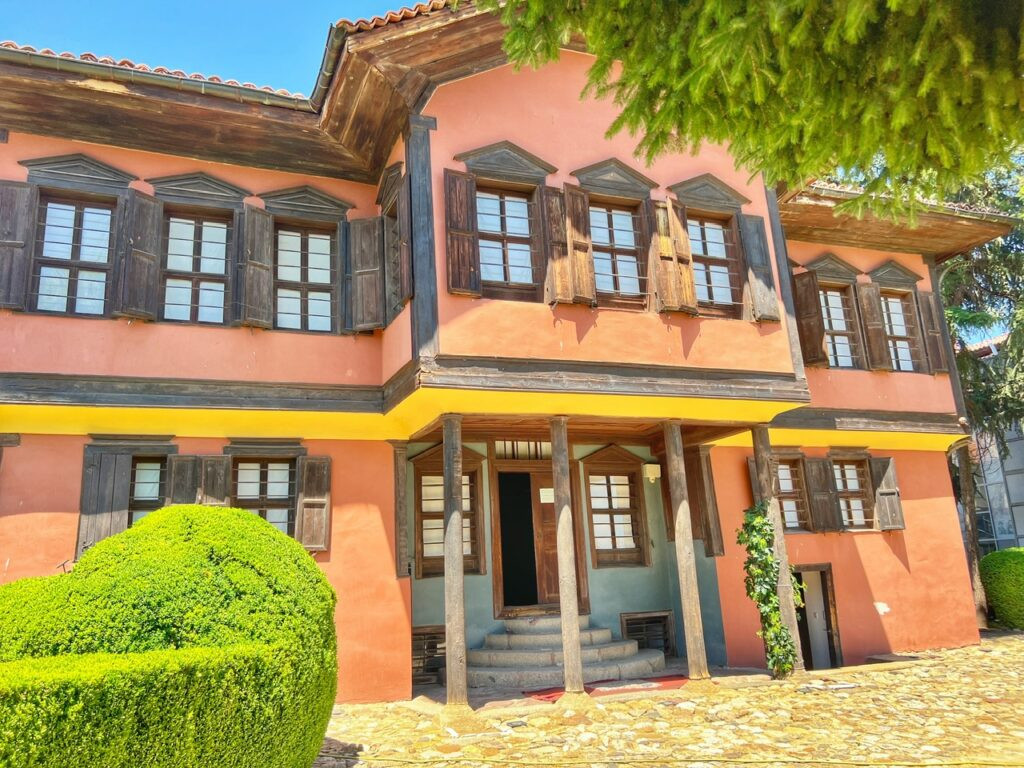
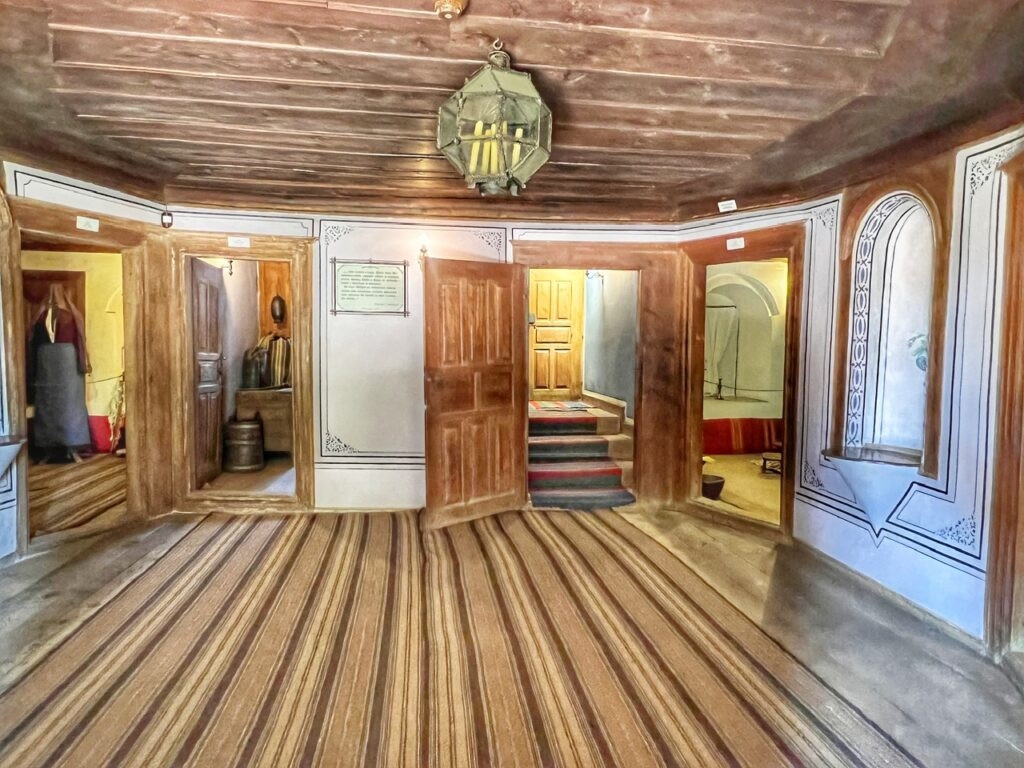
Moving on, we visited the Dudek’s, also included in the tickets, which is a historical and architectural monument from the Renaissance era. Its owner, Petar Dudekov, was a wealthy merchant whose family took an active part in the April Uprising. It was here bullets burst on the front door and dozens of the city’s women, children and elderly took refuge here on April 30, 1876. The uprising was brutally crushed, and much of Panagyurishte was burned down, but it became a symbol of Bulgaria’s struggle for liberation.
The house shows the Revival urban life from the middle of the 19th century. The arrangement reflects the penetration of the European style and fashion in the traditional life of the Bulgarians of that time.
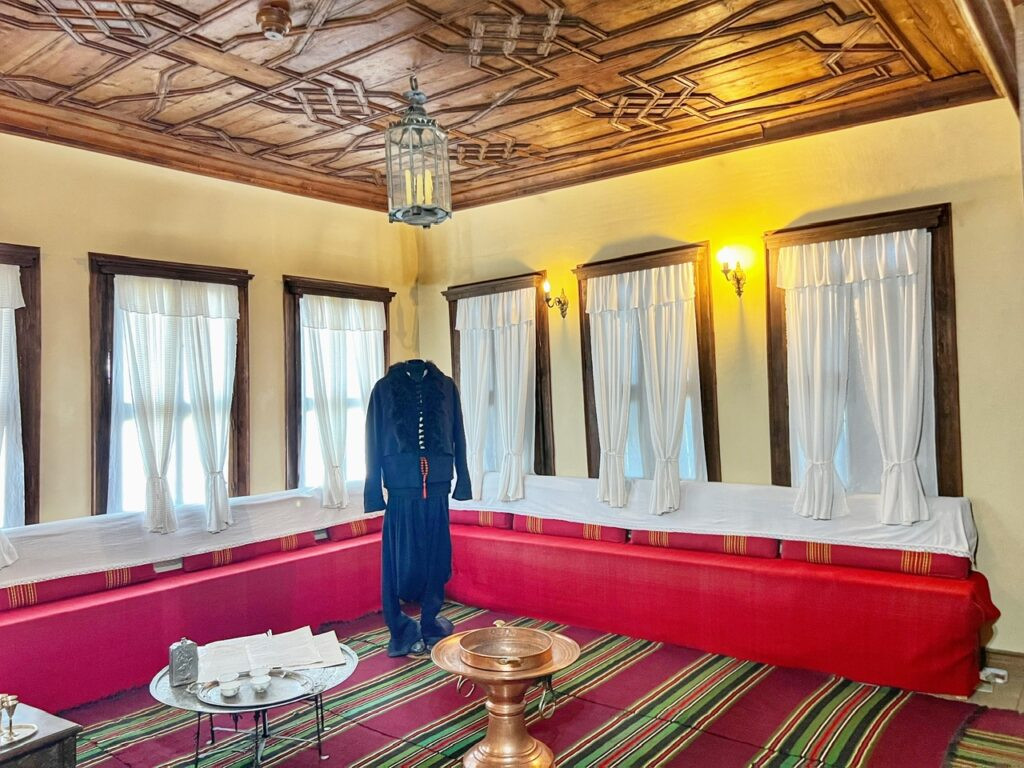
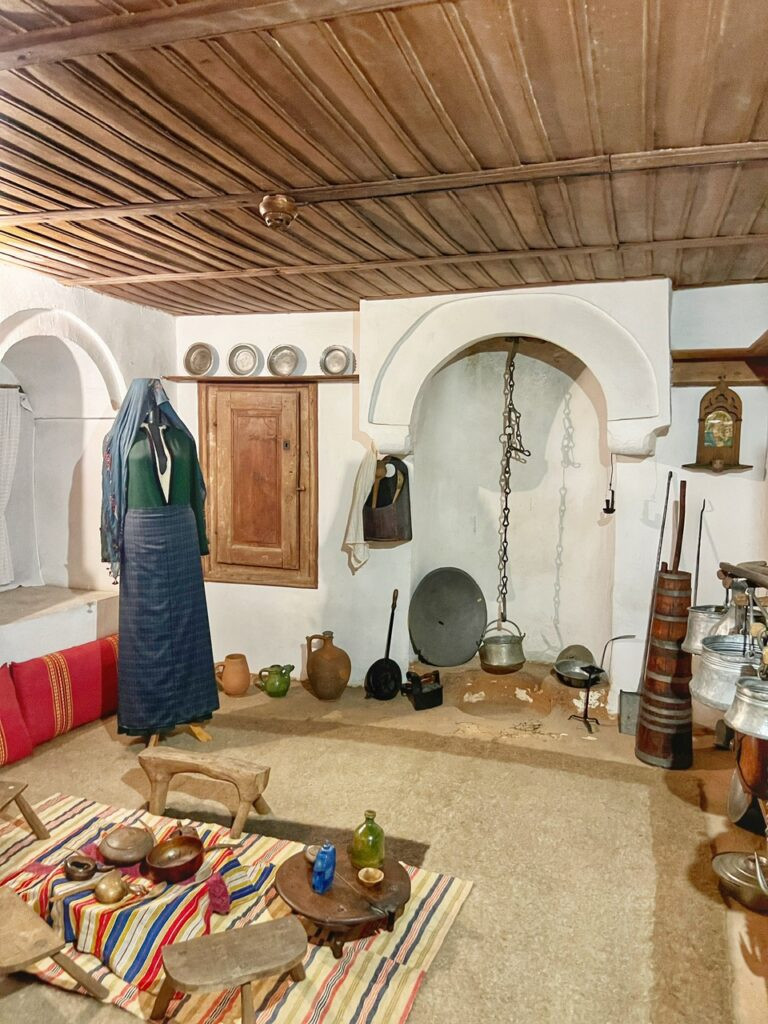
It included a “men’s room” where the men could have their rakia, and a women’s room, where the women could cater to their men.
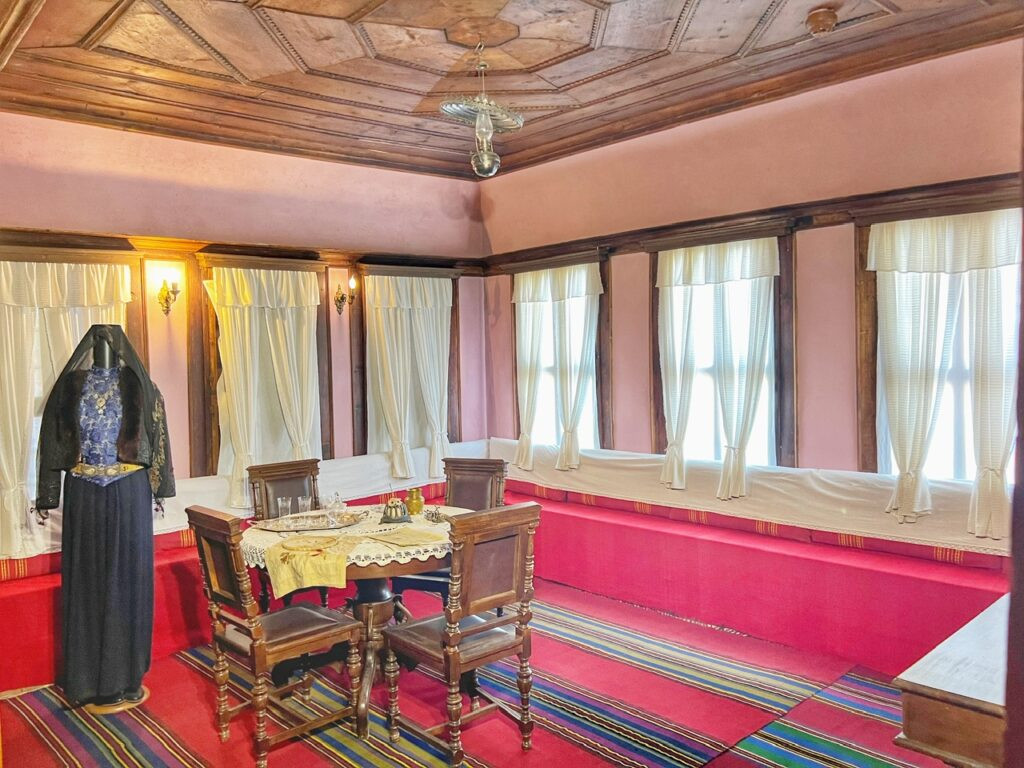
Haha. Fortunately, this was actually the women’s room where they could have tea parties and make fun of their husbands.
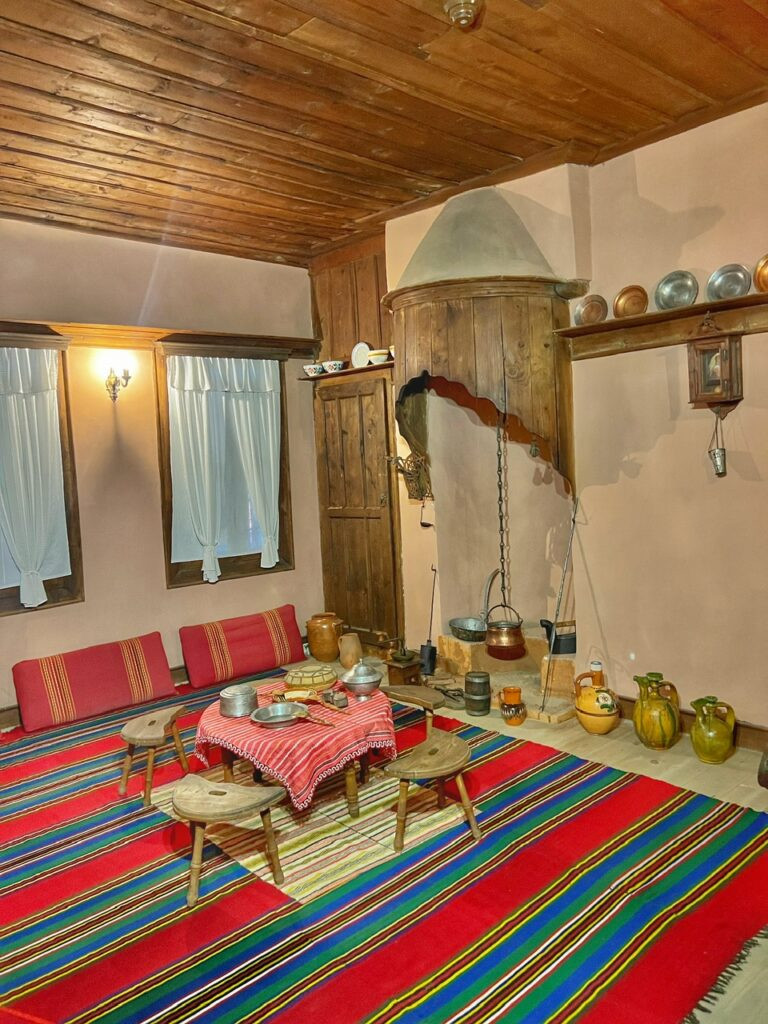
The family kitchen. For a very small family…
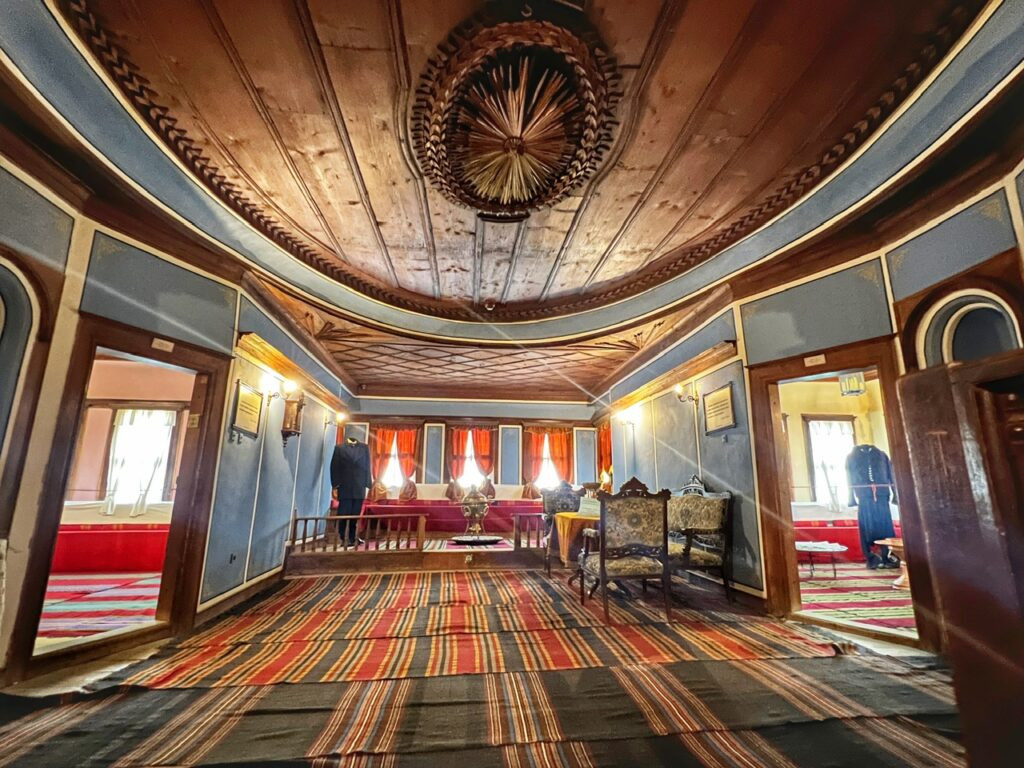
They sure knew how to do ceilings in this part of the world!
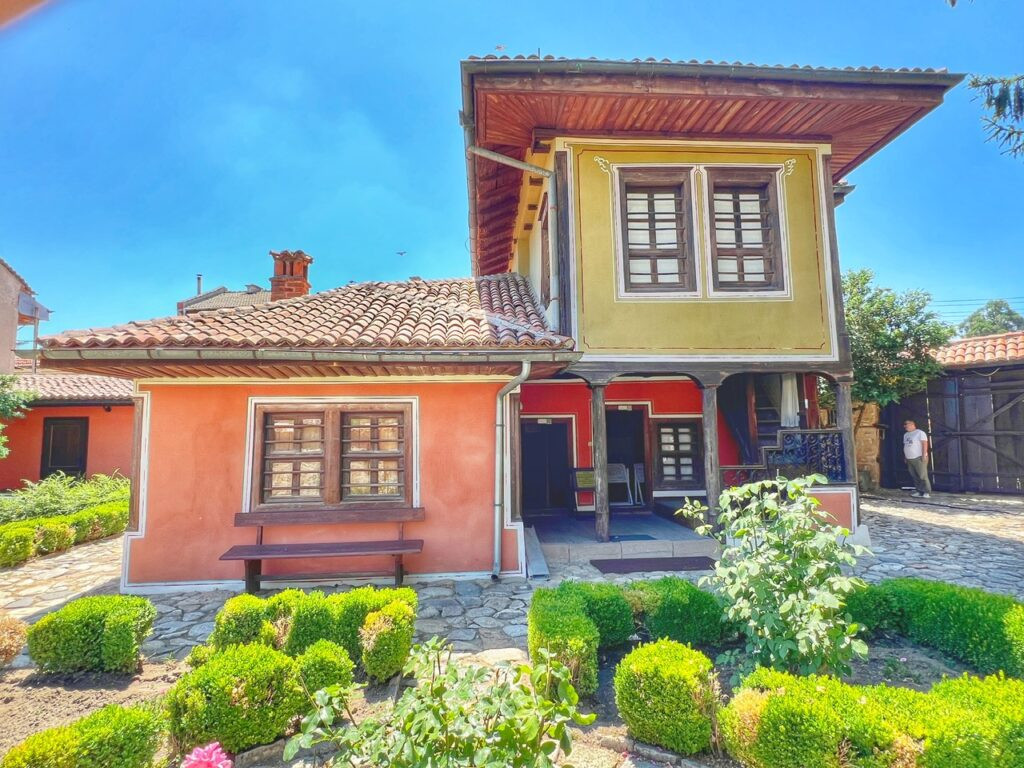
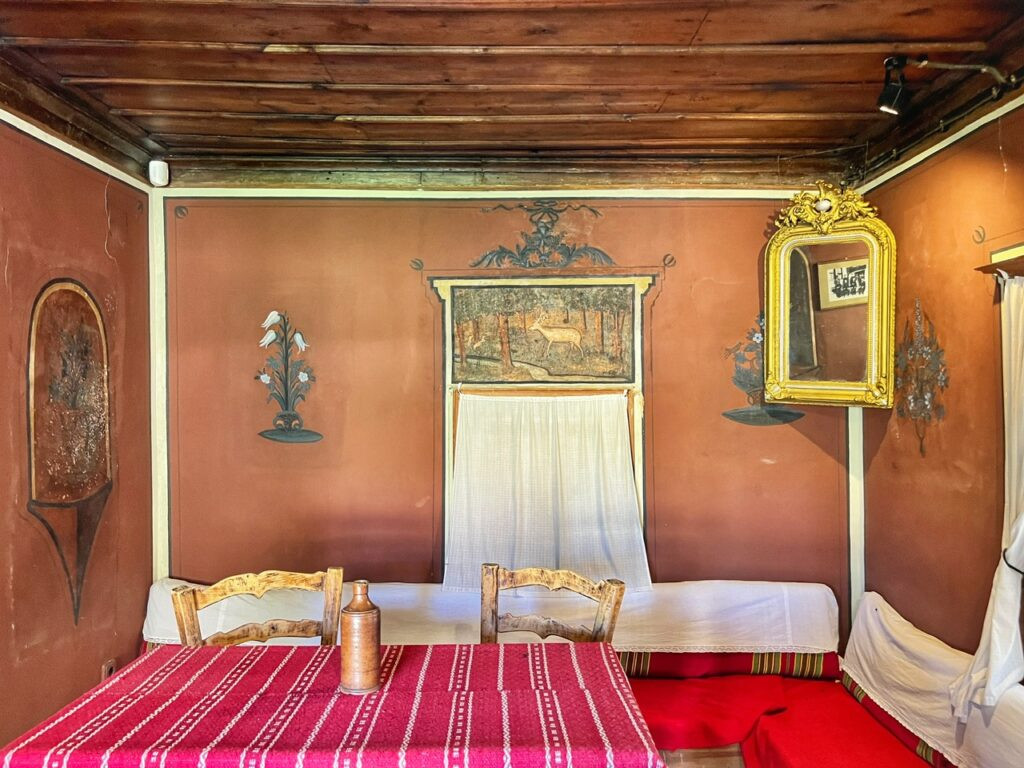
One last Renaissance home visit was to the Tuteva House, which offered another glimpse inside life.
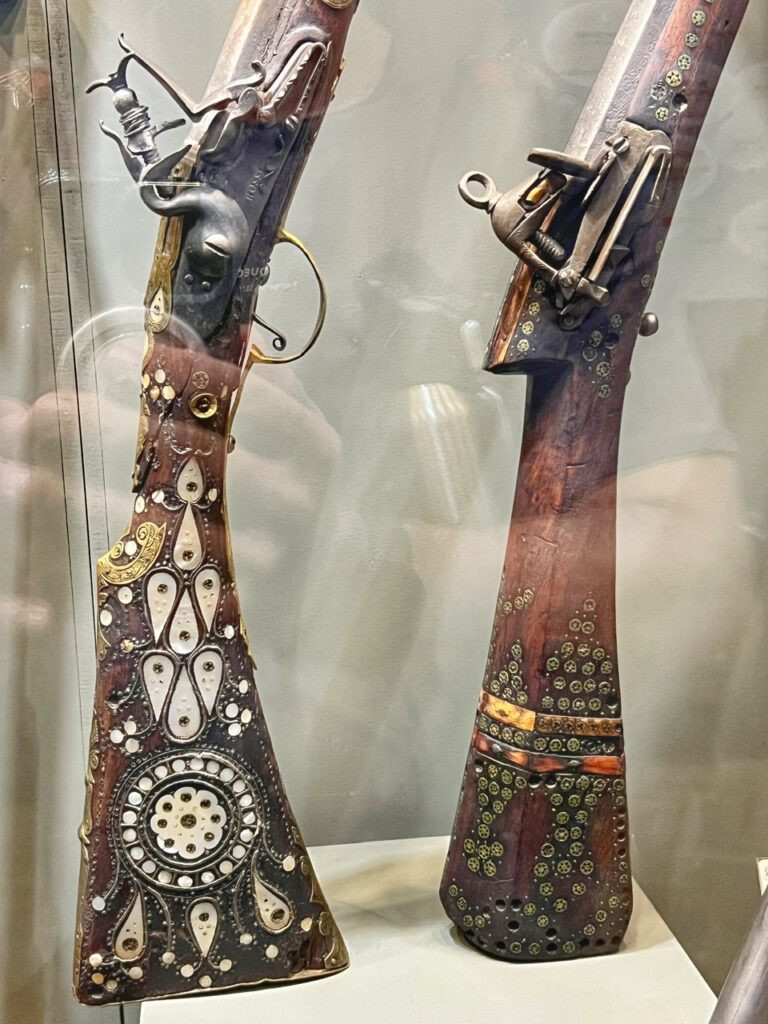
Here they offered some seriously Second Amendment-friendly Bulgarian bling…

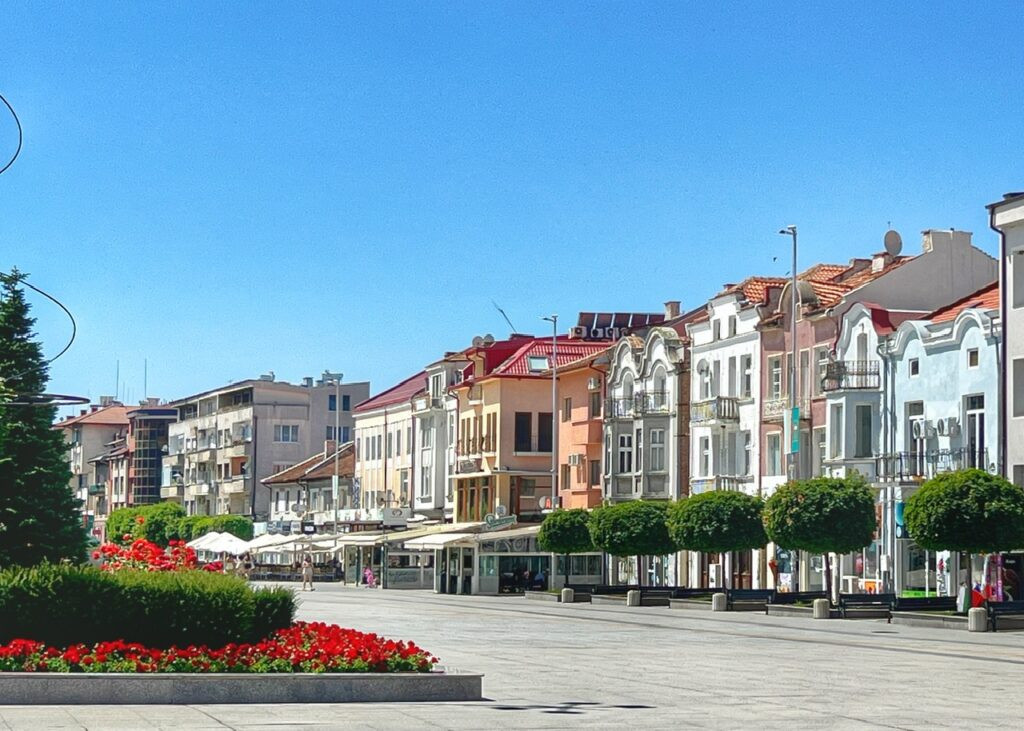
The name Panagyurishte comes from the Greek “panigyri,” meaning fair or festival, because the area was originally a site for trade gatherings. It has a lovely town square lined with historic homes.
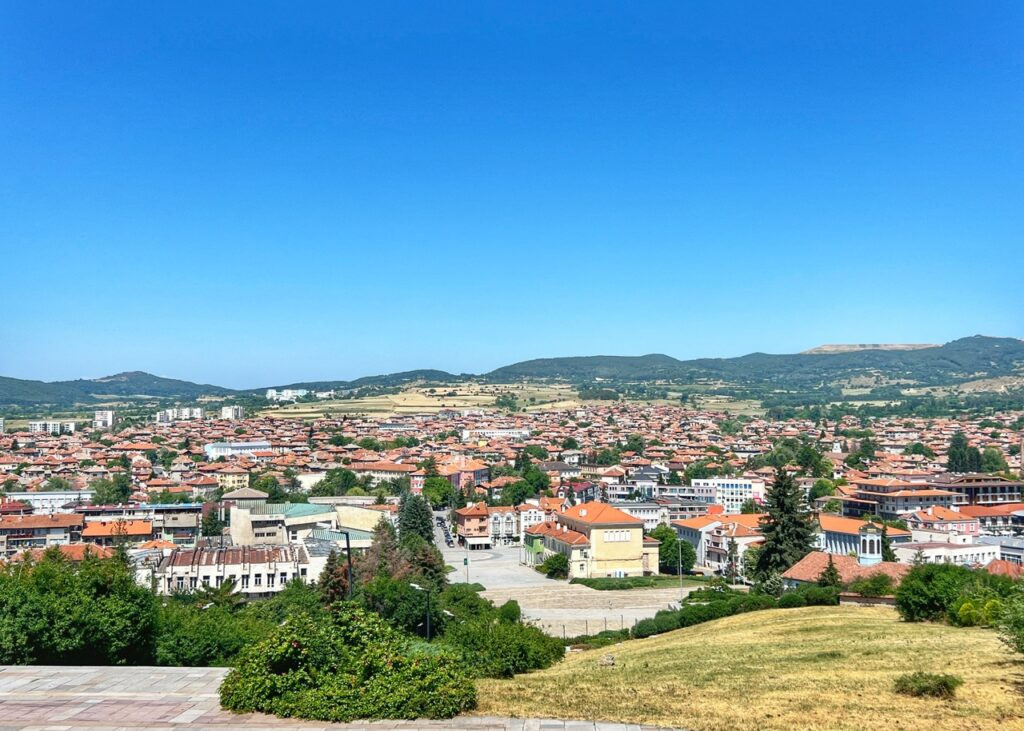
From the April National Memorial Complex, a view of the town, once you’ve climbed many stairs.
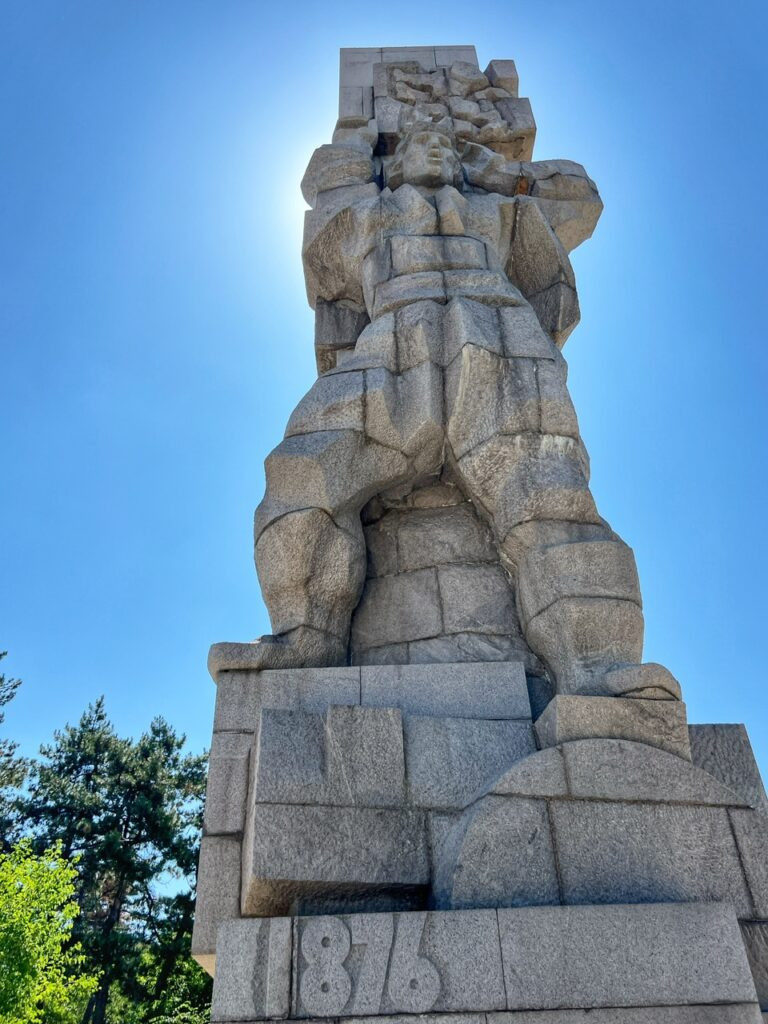
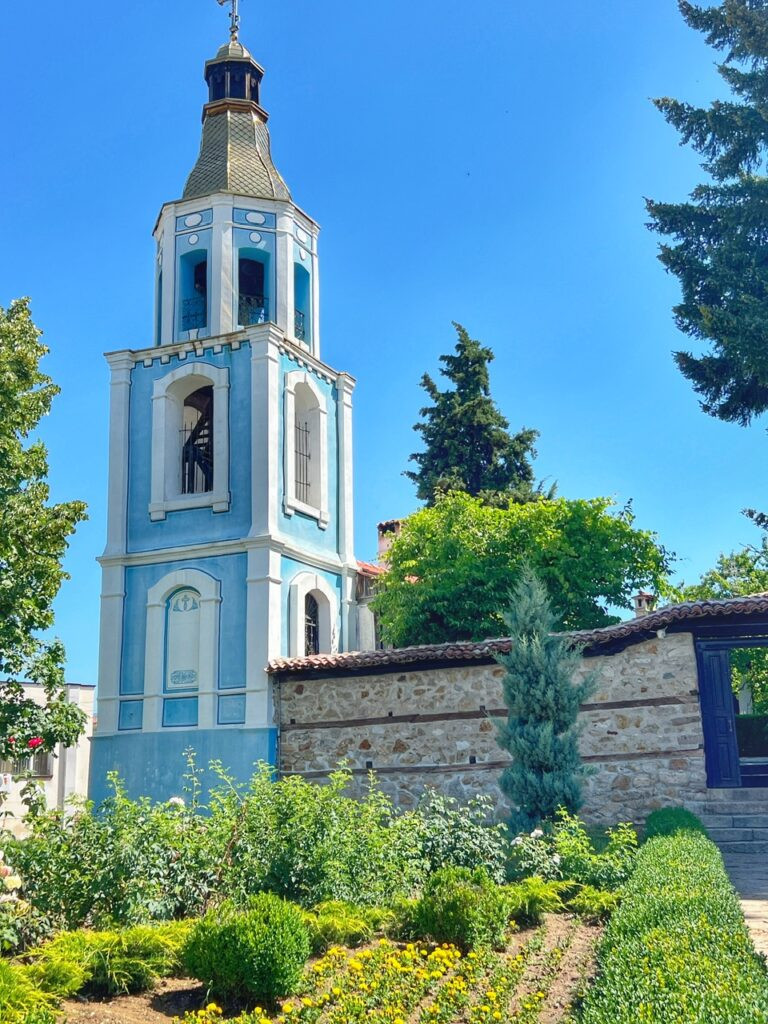
You will also see a blocky statue which depicts a stylized Bulgarian revolutionary (hajduk) standing tall, arms raised as if holding the very weight of Bulgaria’s struggle — or symbolically raising the banner of revolt. According to Chat GPT, the powerful style is meant to evoke strength, endurance, and the unbreakable spirit of the Bulgarian people.We prefer the architectural style of the church a bit more.
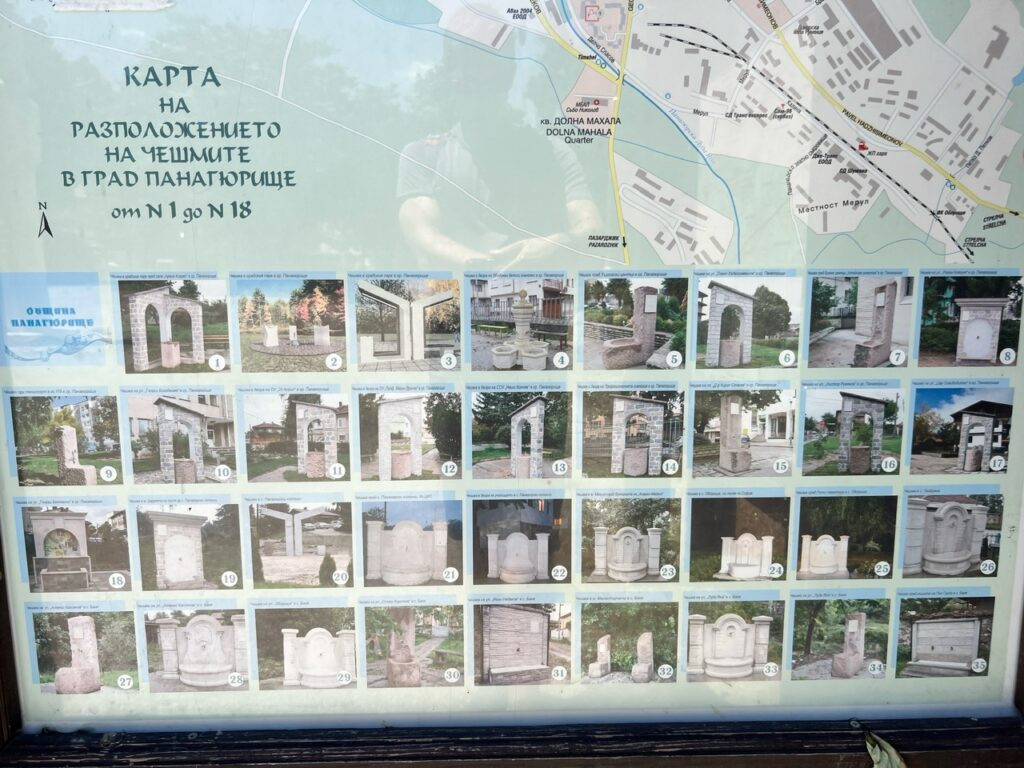
A listing of the 70 water fountains, some ancient, that still exist today in Panagyurishte


